Alcon Research 212WIFI WLAN 802.11b/g in Constellation Vision System User Manual NGVS Book 1 indb
Alcon Research Ltd. WLAN 802.11b/g in Constellation Vision System NGVS Book 1 indb
Contents
User Manual part 5
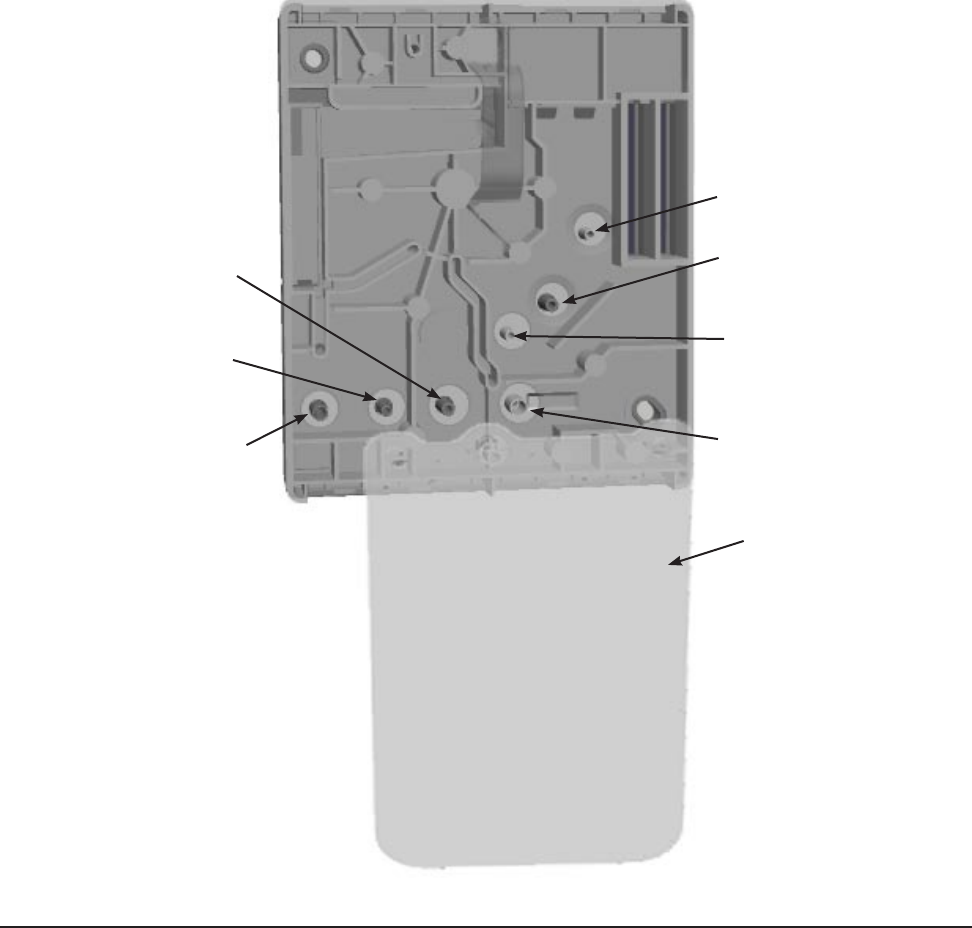
2.106 8065751025
Constellation® Vision System
THE CONSTELLATION CASSETTE
The cassette is the interface between the Constellation® console and the surgical
handpiece. It is used to regulate BSS® irrigating fluid to the handpiece, aspirate debris
from the handpiece, monitor irrigation and aspiration pressure, and deposit the debris
in a sealed drainage bag for disposal.
The premium combined cassette shown in Figure 2-84 is a consumable assembly
capable of providing all the functions needed to perform anterior, posterior, and
combined surgeries. It provides fluid aspiration and pressurized fluid (or filtered
air) infusion to the eye at a constant IOP independent of aspiration flow rates during
posterior segment surgery. The infusion fluid source to the cassette can be changed
during a procedure without interruption or re-priming the tubing connecting the
cassette and the infusion cannula.
Specialized cassettes for posterior and anterior procedures are available and have only
those ports necessary to perform the associated procedure. See Consumbable Pak
Configurations for detailed information on the type of cassette contained in each pak.
Aspiration Port 1 (blue)
(combined and posterior only)
Aspiration Port 2
(light blue)
Irrigation Port (light green)
(combined and anterior only)
Infusion Port (green)
(combined and posterior only)
LPAS Port (white)
(combined and posterior only)
Infusion Source Port (red)
Pressure Source Port (gray)
Drain Bag
Figure 2-84 The Constellation® Combined Cassette
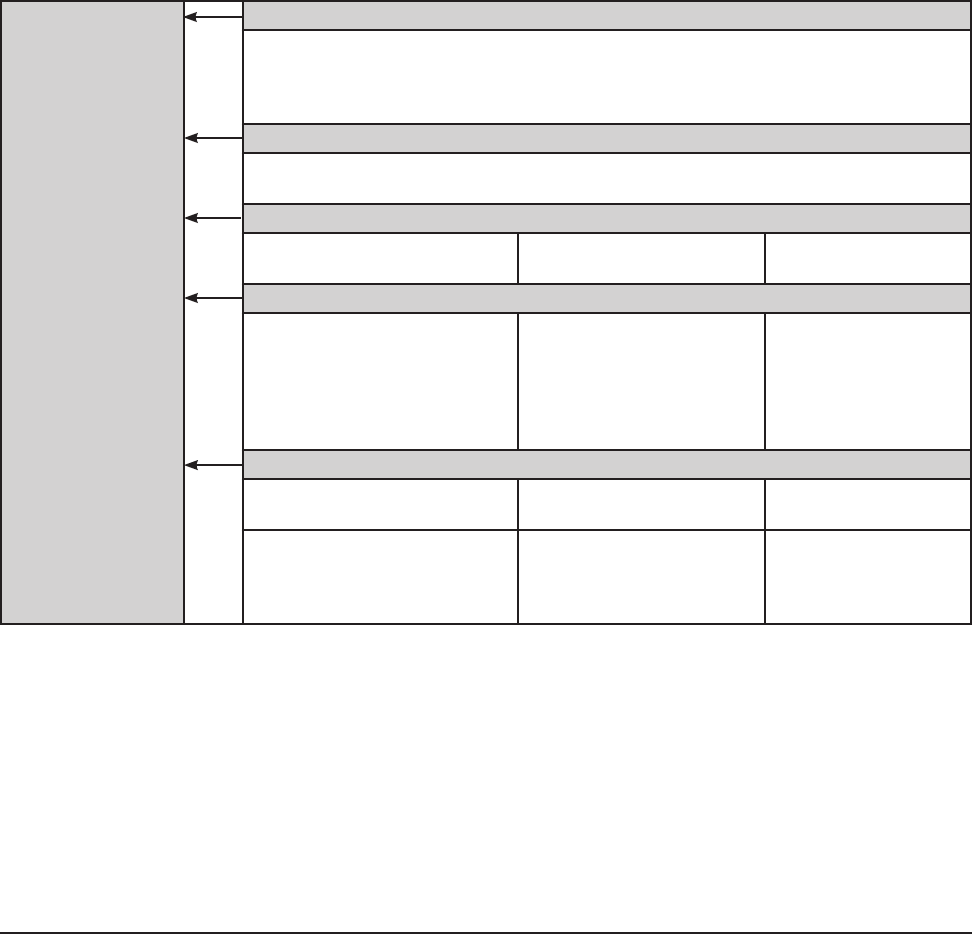
8065751025 2.107
Constellation® Vision System
CONSUMABLE PAK CONFIGURATIONS
Constellation® Consumables Procedure Paks are available in multiple configurations
to meet the user’s needs for each procedure. There are three main types of
Consumables Paks: Posterior segment, Anterior segment and Combined Procedure
(both Posterior and Anterior), and each type of pak can be customized further to
specify items such as gauge specific instruments.
The paks are available in various gauge/size offerings to suit the needs of the surgeon.
For Posterior Segment Procedures (gauge), 20 Ga, 23 Ga, and 25 Ga packs are
available, and for Anterior Segment Procedures (size), 0.9 mm and 1.1 mm packs
are available. Since Combined Procedure Paks are intended to cover both Anterior
and Posterior Segment surgery, the packs are configured with both Posterior (gauge
specific) accessories and Anterior (size specific) accessories. The Building Block
Structure of the Constellation® Consumables Procedure Paks are as follows:
COMBINED
PROCEDURE PAK
Cassette Building Block:
- Combined Procedure Cassette
- Premium Administration Tubing Set
- Premium Infusion FA/X Tubing Set with Auto Infusion Valve
- Irrigation Aspiration Tubing Set
Vit Building Block (20, 23, or 25 GA):
- 5000 cpm UltraVit™ Probe with RFID
- 2500 cpm UltraVit™ Probe
Light Guide Building Block (20, 23, or 25 GA):
- 20 Ga STD Illuminator
- 20 Ga Wide angle Illuminator
- 23 Ga STD Illuminator - 25 Ga STD Illuminator
Posterior Accessories Building Block (20, 23, or 25 GA):
- 20 Ga high flow infusion
cannula
- 20 Ga Posterior Small Parts
Kit
- 20 Ga MVR Blade
- 23 Ga high flow infusion
cannula
- 23 Ga Posterior Small
Parts Kit with Entry System
- 25 Ga high flow
infusion cannula
- 25 Ga Posterior Small
Parts Kit with Entry
System
Anterior Accessories Building Block (0.9 mm or 1.1 mm)
Anterior Small Parts Kit 0.9 mm Infusion Sleeve
Small Parts kit
1.1 mm Infusion Sleeve
Small Parts kit
Ultrasound Phaco Tips
(includes 30R, 45R, 45K, and
45K)
0.9 mm Tip
0.9 mm ABS Tip
0.9 mm Tapered ABS Tip
0.9 mm ABS Flared Tip
1.1 mm ABS Flared Tip
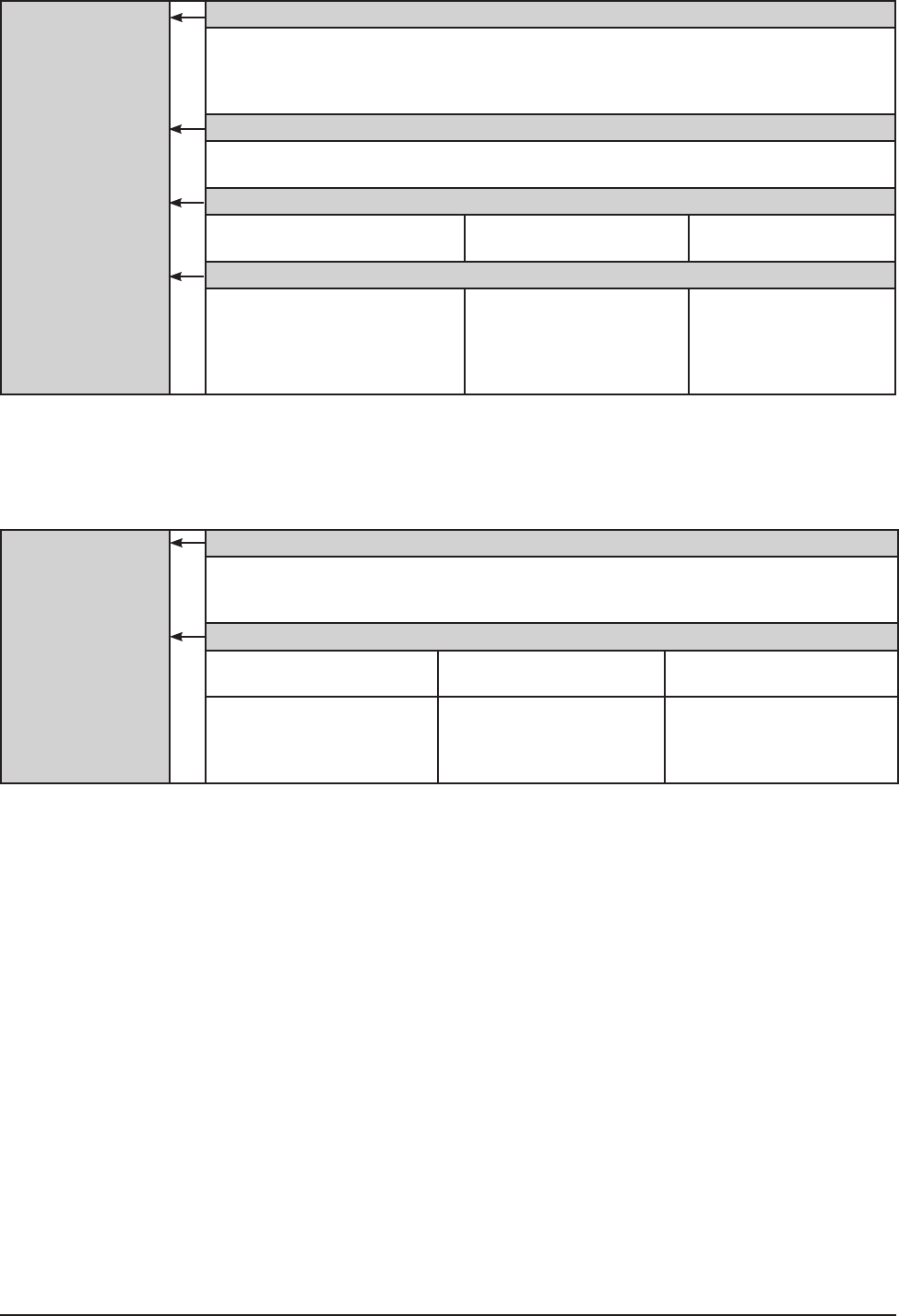
2.108 8065751025
Constellation® Vision System
POSTERIOR
PROCEDURE PAK
Cassette Building Block:
- Posterior Cassette
- Premium Administration Tubing Set
- Premium Infusion FA/X Tubing Set with Auto Infusion Valve
- Auxiliary Aspiration/ Extrusion Tubing Set
Vit Building Block (20, 23, or 25 GA):
- 5000 cpm UltraVit™ Probe with ENGAUGE™ RFID
- 2500 cpm UltraVit™ Probe
Light Guide Building Block (20, 23, or 25 GA):
- 20 Ga STD Illuminator
- 20 Ga Wide angle Illuminator
- 23 Ga STD Illuminator - 25 Ga STD Illuminator
Posterior Accessories Building Block (20, 23, or 25 GA):
- 20 Ga high flow infusion
cannula
- 20 Ga Posterior Small Parts Kit
- 20 Ga MVR Blade
- 23 Ga high flow infusion
cannula
- 23 Ga Posterior Small
Parts Kit with Entry System
- 25 Ga high flow infusion
cannula
- 25 Ga Posterior Small
Parts Kit with Entry
System
ANTERIOR
PROCEDURE PAK
Cassette Building Block:
- Anterior Cassette
- Premium Administration Tubing Set
- Irrigation Aspiration Tubing Set
Anterior Accessories Building Block (0.9 mm or 1.1 mm)
Anterior Small Parts Kit 0.9 mm Infusion Sleeve
Small Parts kit
1.1 mm Infusion Sleeve
Small Parts kit
Ultrasound Phaco Tips
(includes 30R, 45R, 45K, and
45K)
0.9 mm Tip
0.9 mm ABS Tip
0.9 mm Tapered ABS Tip
0.9 mm ABS Flared Tip
1.1 mm ABS Flared Tip
LAST PAGE OF THIS SECTION

8065751025 3.1
Constellation® Vision System
SECTION THREE
OPERATING INSTRUCTIONS
INTRODUCTION
This section details the recommended setup and operation for the Constellation® Vision
System. These procedures may be modified to conform to hospital requirements and practices
as you become experienced in using the system. The operational checks however, that are
performed at various points in the setup procedure to verify instrument operation, must be
performed exactly as indicated.
The procedures are divided into two columns and presume a surgical team of three people:
Surgeon and Scrub Nurse in the sterile field, and a Circulating Nurse in the non-sterile field.
In the left column a directive is given; in the right column the responsible team member is
identified.
Any problems pertaining to setup and check-out procedures should first be directed to the
Troubleshooting section of this manual. If questions still exist, contact the Alcon Technical
Services Department or your local Alcon representative.
POWER UP SEQUENCE
When the power switch is turned on, and the standby switch is pressed, the
Constellation® Vision System logo screen appears while the system performs its
self-test diagnostics. The system is capable of detecting and reporting a wide range of
fault and error conditions. Many of these are checked during the power up procedure.
If a fault is detected during power up, the user is informed and the instrument
becomes non-operational until the failure/problem is corrected. Upon successful
completion of the self-tests, the system enters the setup screen.
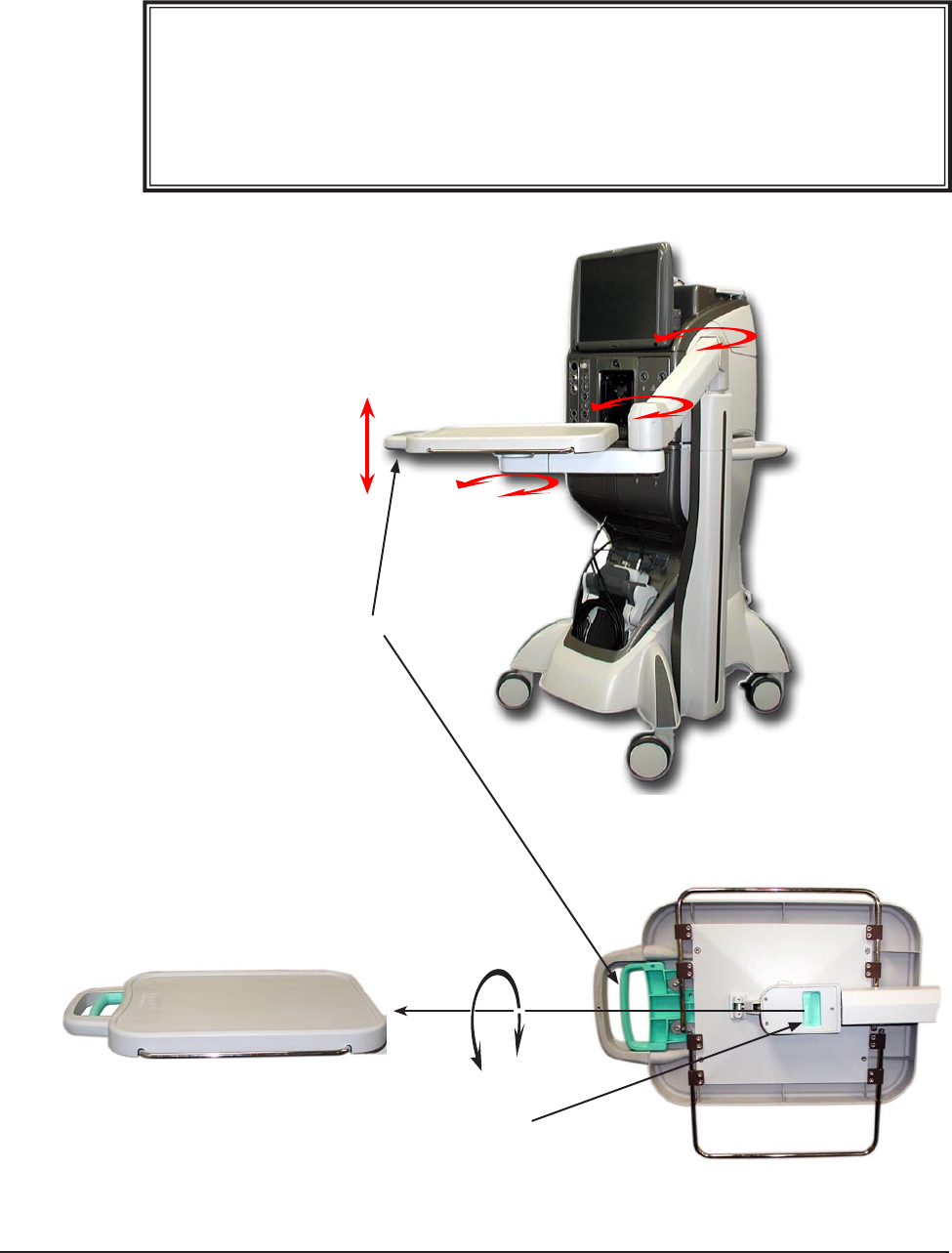
3.2 8065751025
Constellation® Vision System
Instrument Tray Horizontal/Vertical Latch Release
Pulling this latch release in the direction shown allows the user
to rotate the tray to the horizontal or vertical (stored) position.
Each position locks in place when the latch is released.
Instrument Tray Postion Latch Release
Pulling this latch release allows the tray to be
moved vertically (up and down), and to rotate at
the three points shown in this illustration. These
three pivot points allow the tray to be placed in
virtually any position necessary to accomodate
most surgery setups. Releasing the latch locks
the tray in the current position.
POSTIONING THE INSTRUMENT TRAY
The tray is capable of accommodating a variety of positions in the operating room
environment: right, left, front and rear of the surgeon as well as the front of the bed. The tray
height and position are adjustable by pulling the Instrument Tray Latch Release shown in
Figure 3-1.
WARNING!
The maximum allowable load on the instrument tray is 20 lb (9 kg). If the load
exceeds this limit, the tray arm will automatically lower itself in order to avoid
tipping the system over. Additionally, if the instrument tray is positioned over a
patient, a mayo stand should be placed beneath it to avoid a potential collapse
of the tray arm onto the patient.
Figure 3-1 Positioning the Instrument Tray
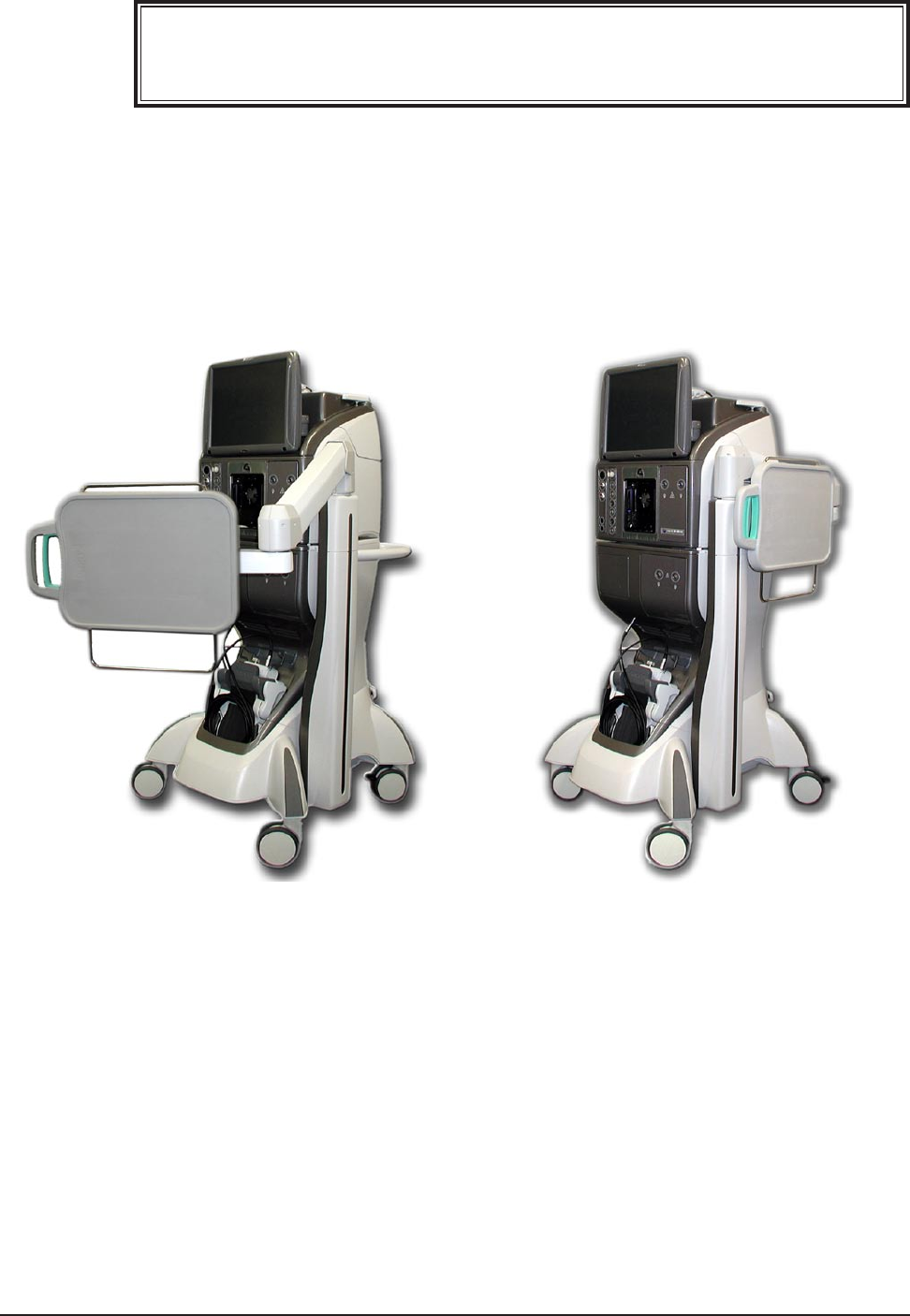
8065750XXX 3.3
Constellation® Vision System
Placing the Instrument Tray in the Stored Position
WARNING!
Place the instrument tray in the stored position (see Figure 3-2) prior to
transportation to avoid a situation that could cause the system to tip.
1 Pull the Horizontal/Vertical Latch Release (see Figure 3-1) and rotate the instrument
tray to the vertical position shown in Figure 3-2.
2 Pull the Position Latch Release and move the tray and arm assembly into the stored
position shown in Figure 3-2.
Instrument Tray in the vertical position Instrument Tray/Arm in the stored position
Figure 3-2 Storing the Instrument Tray
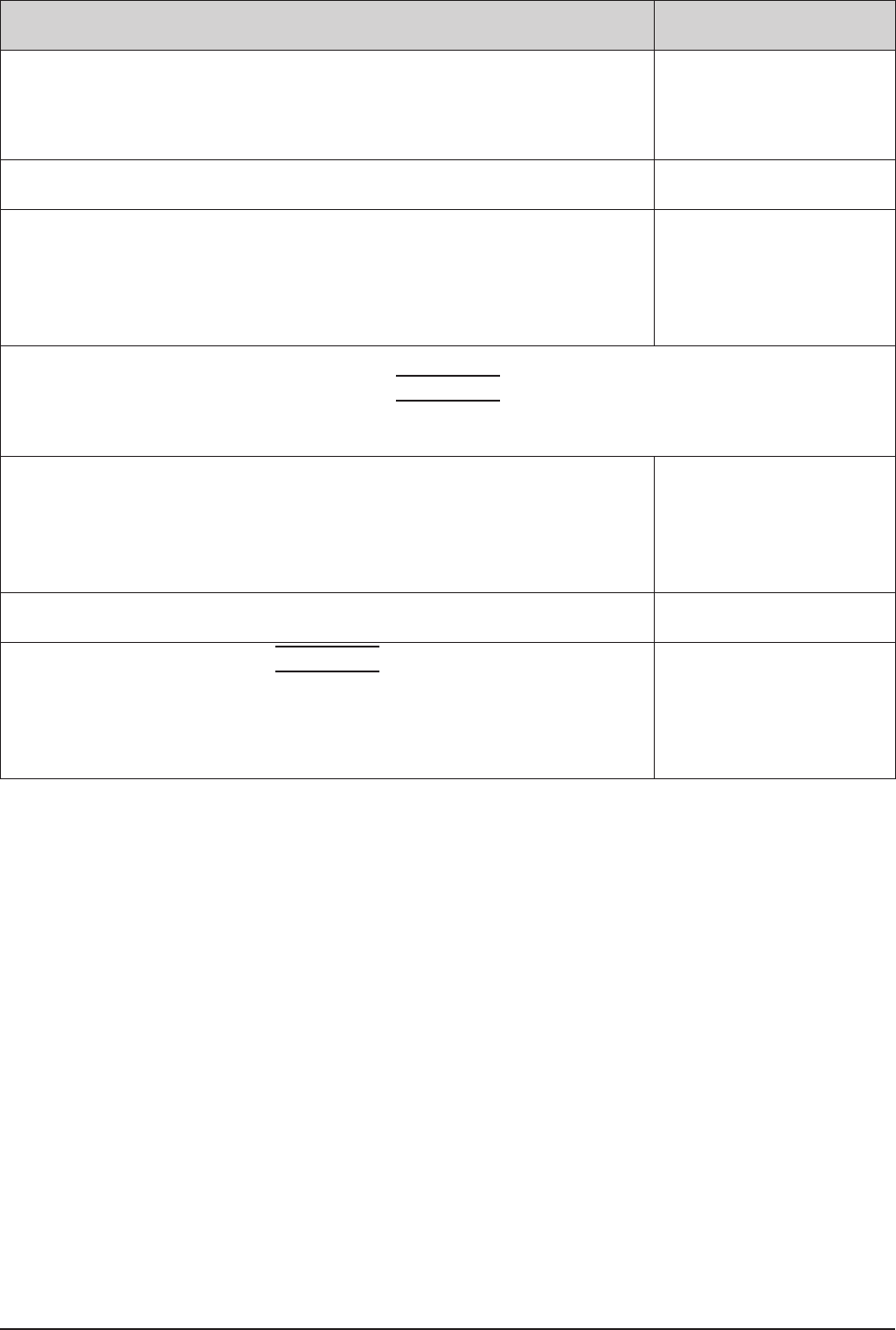
3.4 8065750XXX
Constellation® Vision System
INITIAL SYSTEM SETUP
1. Matching the red dot on the footswitch cable connector to the
red dot on the footswitch, plug cable into footswitch. Plug the
other end of the footswitch cable into the rear panel on the
console (match red dots for proper orientation).
Circulating Nurse
2. Attach air hose to connector on rear panel. Circulating Nurse
3. Plug main power cord into a suitable wall outlet or receptacle.
Turn Power switch ON located at the bottom of the rear
panel next to the power cord (this switch remains ON in the
I position). Turn system power ON using the Standby switch
located at the middle of the rear panel.
Circulating Nurse
CAUTION
Do not use portable socket outlets with this system.
3. The Setup screen appears if this is the first use of the instrument
after power up. Press the Doctor button and select an available
doctor, or add a doctor by following the steps presented on the
display. Scan the pak or select the appropriate handpiece, tip,
accessories, and procedure types.
Circulating Nurse
4. Sterilize the instruments according to hospital procedure. Circulating Nurse
CAUTION
U/S and fragmentation handpieces must be at room
temperature before use. Allow handpiece to air cool after
steam autoclave (at least 15 minutes). Never immerse in
liquid to cool.
Circulating Nurse

8065751025 3.5
Constellation® Vision System
Constellation® Procedure Pak
The Constellation® Procedure Paks are available in three (3) procedural pak configurations:
Constellation® Vitrectomy Pak, Constellation® Phaco Pak, and Constellation® Combined
Procedure Pak. Each pak contains the sterile single-use supplies necessary to perform one
Posterior segment, Anterior segment, or Combined Procedure respectively. The Combined
Procedure covers both Anterior and Posterior segment procedures.
WARNINGS!
1. If any item in the pak is received in a defective condition, Alcon is to be notified immediately.
Do not use any of the contents if the sterile package is damaged in any way. In these cases,
please contact:
By Phone: By Mail:
In USA- (800) 445-2389 Alcon, Inc.
Ask for Consumer Affairs Attention: Consumer Affairs Department
International (713) 668-9100 9965 Buffalo Speedway
Or contact local Alcon Representative Houston, TX 77054-1309, USA
Each pak is identified by a lot number which provides traceability and should be given to
Customer Service Department when discussing the pak.
2. Improper usage or assembly could result in a potentially hazardous condition for the patient.
Mismatch of consumable components and use of settings not specially adjusted for a
particular combination of consumable components may create a patient hazard.
3. Visually confirm that adequate infusion flow is occurring prior to attachment of the infusion
cannula to the eye.
4. Do not operate Vitrectomy probes in air. This could result in performance degradation and/or
potential hazard.
5. Replace Vitrectomy Probe if any of the following conditions are observed:
a. Excessive air bubbles are in the aspiration line.
b. Air bubbles are exiting the cutter port.
c. The cutter does not fully close or does not move when the probe is actuated.
d. The cutting port is not open when the probe is idle.
e. If a reduction of cutting capability or vacuum is observed during the surgical
procedure, stop immediately and replace the probe.
6. Minimize the light intensity and duration of exposure to the retina to reduce the risk of retinal
photic injury.
7. Use of incisions that are smaller than recommended during lens removal can lead to
mechanical and/or thermal damage to the eye tissue.

3.6 8065751025
Constellation® Vision System
The following instructions are applicable to all three procedure paks unless otherwise
specified. For the Combined Procedure Pak setup, follow both Posterior and Anterior
Segment Priming and Setup procedures. For additional assistance in the setup of the console,
press the Setup button on the touch screen monitor.
Procedure Pak and Cassette Setup Procedure
1. Scan the bar code on the Procedure Pak and accessories to be used
with the Bar Code Scanner on the back of the Constellation® console.
Verify on the set up screen that the appropriate active accessories are
indicated and selected on the screen.
Circulator or Non-sterile
Scrub Nurse
2. Peel the lid from the pak and aseptically transfer the components to
the sterile field. Circulator
3. Drape the monitor with the cover provided. Drape the Constellation®
tray arm with the Tray arm drape if applicable. Scrub Nurse
4. Install the cassette by inserting the bottom of the cassette into the
fluidics module. Push the cassette via the handle into the module.
Ensure the drain bag hangs freely.
Scrub Nurse
5. Uncoil the Administration tubing sets (Tubing with Red and Grey
Stripe) and connect to their respective ports on the cassette. The
ports are color coded and keyed for ease of identification. Insert
the connectors into the cassette port and turn clockwise until fully
engaged. For further details refer to the on-screen help.
Scrub Nurse
6. Shake the Drip Chamber on the Administration line and ensure it
rattles. Pass the Administration line to the circulator directly or set the
Administration line on the bottle hook for retrieval by the circulator.
Scrub Nurse
7. Remove the protective cover from the drip chamber and aseptically
spike the irrigation bottle with the drip chamber spike. Squeeze drip
chamber to fill approximately 2/3 to 3/4 full.
Circulator
8. For Constellation® Vitrectomy Pak and Constellation® Combined
Procedure Pak, proceed to the Posterior Segment Setup Procedure
section. For Constellation® Phaco Pak, proceed directly to the
Anterior Segment Setup Procedure Section.
Scrub Nurse

8065751025 3.7
Constellation® Vision System
Posterior Segment Setup Procedure
1. Connect the Infusion tubing set (Green) to the corresponding
cassette port. If the Auto Fluidic Valve tube set is used, connect
both connectors (Green and White). The connectors and cassette
ports are color coded and keyed for ease of identification. Insert
the connectors into the cassette port and turn clockwise until fully
engaged.
Scrub Nurse
2. Open the side compartment of the Infusion Cannula tray to gain
access to the luer fitting. While keeping the cannula in the tray,
connect the tubing to the Auto Fluidic Valve (Green). Set the tray on a
flat surface in preparation for Priming and Calibration.
Scrub Nurse
3. Connect the Vitrectomy Probe aspiration line to the Suction Part 1
(Dark Blue). Connect the drive lines to the console pneumatic port. Scrub Nurse
4. For Posterior Pak only, connect the Auxiliary Aspiration Line to the
cassette Port (Light Blue-Suction Port 2). Connect the Extrusion
accessory (handpiece or cannula) to the Auxiliary Aspiration line
(Light Blue). If a Fragmentation handpiece is used, connect the
handpiece to the Auxiliary Aspiration line in place of the Extrusion
Handpiece and refer to the Constellation® Fragmentation Directions
for Use for setup instructions.
Scrub Nurse
5. Set the Vitrectomy Probe and Extrusion Accessory in a sterile cup or
drape to capture the fluid from priming. The volume of fluid expelled
from the accessories is minimal. Note: If aspiration prime function
is selected, fill the sterile cup with sterile water. Ensure that the
aspiration ports are submerged in the fluid.
Scrub Nurse
6. Carefully uncoil the fiber optic illuminator probe/filter and present the
metal connector to the Circulator Nurse. Scrub Nurse
7. Accept the metal connector from the Scrub Nurse and plug it into the
desired illuminator port. Verify that the connector is seated into the
port.
Circulator
8. For Combined Procedure cases, continue to the Anterior Segment
Priming and Setup Procedure. Scrub Nurse/ Circulator
9. Press the Start Prime button on the touch screen monitor and initiate
priming. Allow the Priming and Calibration sequence to complete.
The process may take 1-2 minutes and care should be taken not to
bump the tubing and handpieces during priming or tuning.
Scrub Nurse
10. After Setup is complete, the console will proceed to Surgery mode
automatically. Scrub Nurse
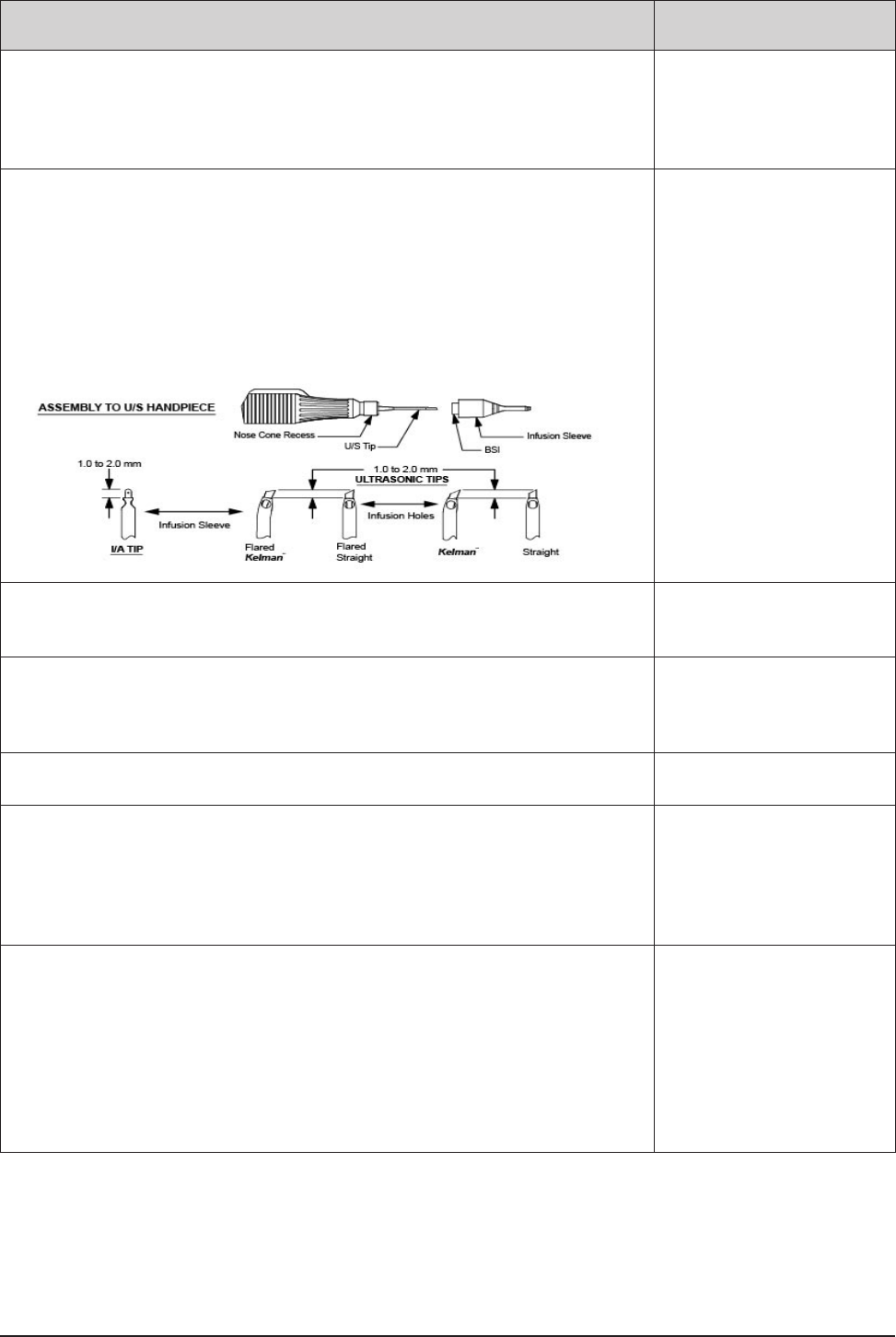
3.8 8065751025
Constellation® Vision System
Anterior Segment Setup Procedure
1. Connect the Irrigation/Aspiration tubing set (Light Green/Light Blue) to
the corresponding port on the cassette. The connectors and cassette
ports are color coded and keyed for ease of identification. Insert
the connectors into the cassette port and turn clockwise until fully
engaged.
Scrub Nurse
2. Thread U/S Tip onto U/S handpiece. Tighten firmly using the Tip
Holder Wrench. Remove Tip Holder/Wrench and retain for future
tip removal. Match the proper Ultrasonic Tip size with the
corresponding Infusion Sleeve per note 6 in the Warning Section.
Thread Infusion Sleeve with BSI onto the handpiece, over the U/S Tip.
Sleeve end should clear bevel on U/S Tip by 1-2 mm. Avoid twisting
of the Sleeve. Note: Infusion Sleeves fit over both the U/S and the
I/A tips. Orient port holes as shown:
Scrub Nurse
3. Connect white male irrigation line luer and blue female aspiration line
luer to U/S handpiece. Slide Test Chamber over Infusion Sleeve. Set
the handpiece on the sterile tray or the console tray arm if available.
Scrub Nurse
4. Press the Start Prime button on the touch screen monitor to initiate
priming and tuning of the handpiece. This process may take 1-
2 minutes. and care should be taken not to bump the tubing and
handpieces during priming or tuning
Scrub Nurse or Circulator
5. After Setup is complete, the console will proceed to Surgery mode
automatically. Scrub Nurse
6. Prior to start of the procedure, depress footswitch to position 1 to
stream fluid from the irrigation port and activate reflux function to
stream irrigation fluid from the aspiration port. Observe the stream of
irrigating fluid from the irrigation and aspirations ports. If the stream
of irrigation fluid is weak or absent, good fluidics response will be
jeopardized.
Scrub Nurse
7. Thread I/A tip onto I/A handpiece if required. Tighten firmly, using
the I/A Tip Wrench. Remove I/A Tip Wrench and retain for future tip
removal. Thread Infusion Sleeve onto the handpiece, over the I/A
Tip. Sleeve end should clear end of I/A Tip by 1-2 mm. Avoid twisting
of the Sleeve. Orient port holes as shown in Step 1 and ensure that
I/A tip aspiration hole is not obstructed. Prior to use, disconnect the
white male irrigation line luer and blue female aspiration line luer from
the U/S Handpiece. Connect white male irrigation line luer and blue
female aspiration line luer to I/A handpiece.
Scrub Nurse

8065751025 3.9
Constellation® Vision System
8. When in Surgery screen, select I/A mode. Depress footswitch to
position 1 to stream irrigation fluid from the irrigation port and activate
reflux function to stream irrigation fluid from the I/A tip’s aspiration
port. Observe the stream of irrigating fluid from the irrigation and
aspirations ports. If the stream of irrigation fluid is weak or absent,
good fluidics response will be jeopardized.
Scrub Nurse
CAUTION
Use of this product may require surgical settings adjustments. Ensure that appropriate
Constellation® system settings are used with the Constellation® Procedure Paks. Prior to
initial use, contact your Alcon Sales Representative for in-service information. (Within the
U.S. call 800-TO-ALCON or 817-293-0450. Outside of the U.S., contact you local Alcon Sales
Representative.)

3.10 8065751025
Constellation® Vision System
Auto Gas Filler Setup Procedure
WARNING!
The Constellation® Auto Gas Filler kit is intended for one procedure only. Reuse, improper
usage or assembly could result in a potential hazardous condition for the patient (Accreditation
Manual for Hospitals, 1982). Alcon assumes no responsibility for complications that may arise
as a result of the reuse or improper usage of any part of the kit.
1. Scan the bar code on the Auto Gas Filler Kit with the Bar Code Scanner
on the back of the Constellation® console.
Circulator or Non-sterile
Scrub Nurse
2. Peel the lid from the kit and aseptically transfer the components to the
sterile field. From the Options menu, under the Extras tab, select Auto
Gas Fill, or select the Auto Gas Filler button in surgery mode. The AGF
port on the console illuminates for ease of identification.
Circulator
3. Connect the purple pneumatic connector assembly to the filter on the
AGF Syringe assembly.
Scrub Nurse
4. Connect the clear tubing found on the pneumatic connector assembly
to the female luer port on white rear adapter on the AGF Syringe
assembly. The AGF is now ready for connection to the AGF port on the
console. Note: Verify that the luer connections are securely attached.
Scrub Nurse
5. The AGF is equipped with ENGUAGE™ RFID and upon connection to
the console the ring around the AGF port illuminates green to confirm a
proper connection. The port on the console is color coded for ease of
identification. NOTE: The flange on the connector acts as a sterile
barrier so this task can be performed by the sterile scrub nurse.
Scrub Nurse
6. On the AGF control screen, select the type of gas to be used for
the procedure (C3F8 or SF6). Press the start button to initiate the
filling process. The console will perform the purge and fill cycles
automatically based on the user defined setting. Note: Ensure that the
plunger is fully retracted at the back of the syringe. A partially retracted
syringe would indicate an incomplete fill/purge cycle process. If this
happens, repeat the Gas filling step a second time and if the problem
persists, replace with another kit and contact Customer Service.
Scrub Nurse
7. Remove the AGF Syringe by first disconnecting the clear tubing from
the rear adaptor on the AGF Syringe Assembly. And then remove the
AGF Syringe Assembly from the console by disconnecting the filter
from the purple pneumatic connector. The purple pneumatic connector
shall not be removed from the console until the end of the procedure for
disposal.
Scrub Nurse
8. The AGF syringe assembly is filled with the selected gas. Two (2)
preprinted labels are supplied with the kit to identify the type of gas
contained in the syringe (C3F8 or SF6). The label can be applied
directly to the syringe for identification.
Scrub Nurse
9. An extra clean filter (Blue) is provided with the kit, to be used as
needed. The filter that comes pre-connected with the kit is clear (non-
colored). The user can remove the clear filter and replace it with the
sterile blue filter.
Scrub Nurse or Surgeon

8065751025 3.11
Constellation® Vision System
Fragmentation Setup Procedure
1. Scan the bar code on the Constellation® Fragmentation Kit with the
Bar Code Scanner in the back of the Constellation® console.
Circulator or Non-sterile
Scrub Nurse
2. Open the pouch and aseptically transfer the sealed plastic tray to
the sterile field. The plastic tray that contains the components is
considered sterile.
Circulator
3. Peel the Tyvek lid from the plastic tray and remove the contents from
the tray. Note: Do not discard the plastic tray as it can be used to
capture the excess fluid during priming and tuning.
Scrub Nurse
4. Connect the Female/Female luer to the Auxiliary Aspiration line (Light
Blue). There is also an additional Female/Female luer in the small
parts kit that come in the cassette Procedure Pak.
Scrub Nurse
5. Connect the Auxiliary Aspiration line to the luer port on the proximal
end of the Fragmentation Handpiece.
Scrub Nurse
6. Connect the Fragmentation Handpiece electrical connector to the
Ultrasound Handpiece port on the console.
Scrub Nurse
7. Attach the Fragmentation tip to the handpiece with the wrench that
the tip was packaged in. NOTE: Do not discard the wrench as it is
also used for the removal and disposal of the tip.
Scrub Nurse
8. Thread the tip on clockwise, and when tightened remove the wrench
from the handpiece. Caution: Be cautious when handling without the
tip cover as the tip is sharp.
Scrub Nurse
9. With the tip wrench removed, attach the Tuning Tip Cover over the
Fragmentation tip and on to the front end of the handpiece. Insure
that the tip is not in contact with the cover and that the tabs are
engaged by means of a positive snap for secure attachment. The
Handpiece and tip is ready for Priming and Tuning
Scrub Nurse
Push Prime Set Up Procedure
1. Set the Handpiece on the Plastic tray supplied or an absorbent drape
where excess fluid from priming can be captured. If the plastic tray is
used, insure that it is sitting on a stable surface. NOTE: Push Prime
is only available during initial set up together with the Cassette Pak.
Once the console enters Surgery Mode, the Handpiece will need to
be Suck Primed (see below for instructions)
Scrub Nurse
2. Initiate Prime in the Set Up Screen and the Handpiece will be primed
and tuned as part of the Console Priming/Set Up sequence.
Scrub Nurse
3. Wait for the confirmation that priming and tuning was successful prior
to use.
Scrub Nurse
Aspiration Prime Set Up Procedure
1. Prepare a cup or well with sterile fluid (Water/BSS) large enough
such that the entire Priming/Tuning Tip cover is submerged below the
fluid level.
Scrub Nurse
2. Submerge the front end of the Fragmentation Handpiece slowly in the
fluid container. NOTE: Verify that the entire front end including the
Tuning Tip Cover is submerged in the fluid and the tip cover is filled
with fluid. Verify that the tip is not in contact with the cover or any
other surfaces.
Scrub Nurse
3. Initiate Prime in the Set Up Screen and the handpiece will be primed
and tuned as part of the console priming set up sequence.
Scrub Nurse
4. Wait for the confirmation that priming and tuning was successful prior
to use.
Scrub Nurse
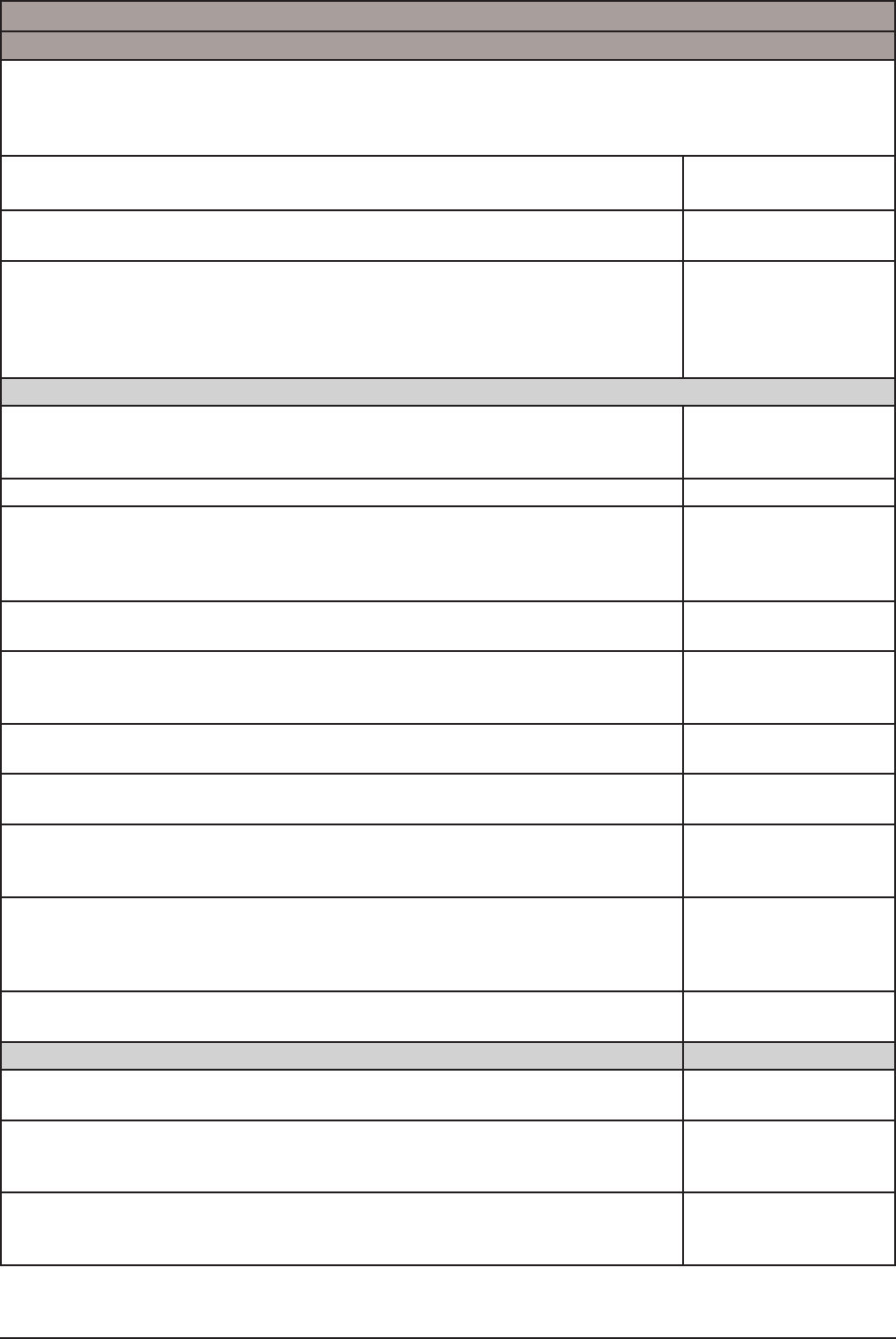
3.12 8065751025
Constellation® Vision System
Viscous Fluid Control Setup Procedure
Syringe Adapter Connection
WARNINGS!
• Do not use if a stream of air bubbles is observed passing through the fluid
• Do not use VFC Kit with fluid viscosity greater than 5000 centistoke
1. Scan the bar code on the VFC Kit with the Bar Code Scanner in the back
of the Constellation® console. Select VFC in the Accessories panel.
Circulator or Non-sterile
Scrub Nurse
2. Peel the lid from the pak and aseptically transfer the components to the
sterile field.
Circulator
3. Connect the ENGAUGE™ RFID connector on the VFC Syringe Adapter
to the Viscous Fluid Control Port on the console. The VFC port on the
console will be lit to indicate the appropriate port for connection. NOTE:
The flange on the connector acts as a sterile barrier so this task can be
performed by the sterile scrub nurse.
Scrub Nurse
Silicone Oil Injection
1. When ready to perform the silicone oil injection procedure, select the
VFC Injection function in Surgery Mode. Select the gauge of the cannula
planned for the procedure.
Circulator or Scrub
Nurse
2. Ensure that the tip cap is securely attached to the 10 cc syringe barrel. Scrub Nurse
3. Following the directions for use supplied with the sterile Silicone Oil (i.e.
Alcon Silikon 1000, REF 8065601185), aseptically transfer viscous fluid
to the syringe barrel. Care should be taken to prevent air bubbles from
entering syringe.
Scrub Nurse
4. Partially insert the syringe stopper supplied in the kit to prevent the
silicone oil from spilling.
Scrub Nurse
5. Tilt the syringe barrel such that the luer tip is pointing upwards and
remove the tip cap to allow air to escape and complete inserting the
syringe stopper.
Scrub Nurse
6. Keeping the Cannula cover on, attach the desired VFC cannula to the
syringe. There is both a 20 Ga and 23 Ga Cannula provided with the kit.
Scrub Nurse
7. Using the plastic push rod included with the kit, advance the stopper to
purge all air from the syringe and cannula.
Scrub Nurse
8. Connect the silicone oil filled syringe barrel to the syringe adapter by
pushing down until it bottoms out and rotate the barrel 90°. Ensure that
the flanges on the syringe barrel are entirely engaged with the adapter.
Scrub Nurse
9. Remove the cannula cover while tilting the cannula tip up, carefully
pressurize the syringe to expel any remaining air that is trapped in the
syringe barrel. Wrap the cannula tip in sterile gauze, lint free cloth or
sponge to capture any expelled fluid.
Scrub Nurse
10. On the VFC screen, adjust the appropriate injection pressure and the
device is ready for use.
Scrub Nurse
Silicone Oil Extraction
1. Follow the same procedure for Syringe Adapter Connection as described
above.
Scrub Nurse
2. When ready to perform the silicone oil extraction procedure, select
the VFC Extraction function in Surgery Mode. Select the gauge of the
cannula planned for the procedure.
Circulator or Scrub
Nurse
3. Remove the tip cap from the 10 cc syringe barrel and insert the syringe
stopper supplied in the kit. Use the plastic push rod to push the stopper
all the way to the bottom of the syringe barrel.
Scrub Nurse

8065751025 3.13
Constellation® Vision System
4. Connect the syringe barrel to the syringe adapter by pushing down until
it bottoms out and rotate the barrel 90°. Ensure that the flanges on the
syringe barrel are entirely engaged with the adapter.
Scrub Nurse
5. Keeping the Cannula cover on, attach the desired VFC cannula to the
syringe. There is both a 20 Ga and 23 Ga Cannula provided with the kit.
Scrub Nurse
6. On the VFC screen, set the appropriate vacuum level for the procedure
and the device is ready for use. Remove the cannula cover prior to
insertion to protect the cannula tip.
Scrub Nurse
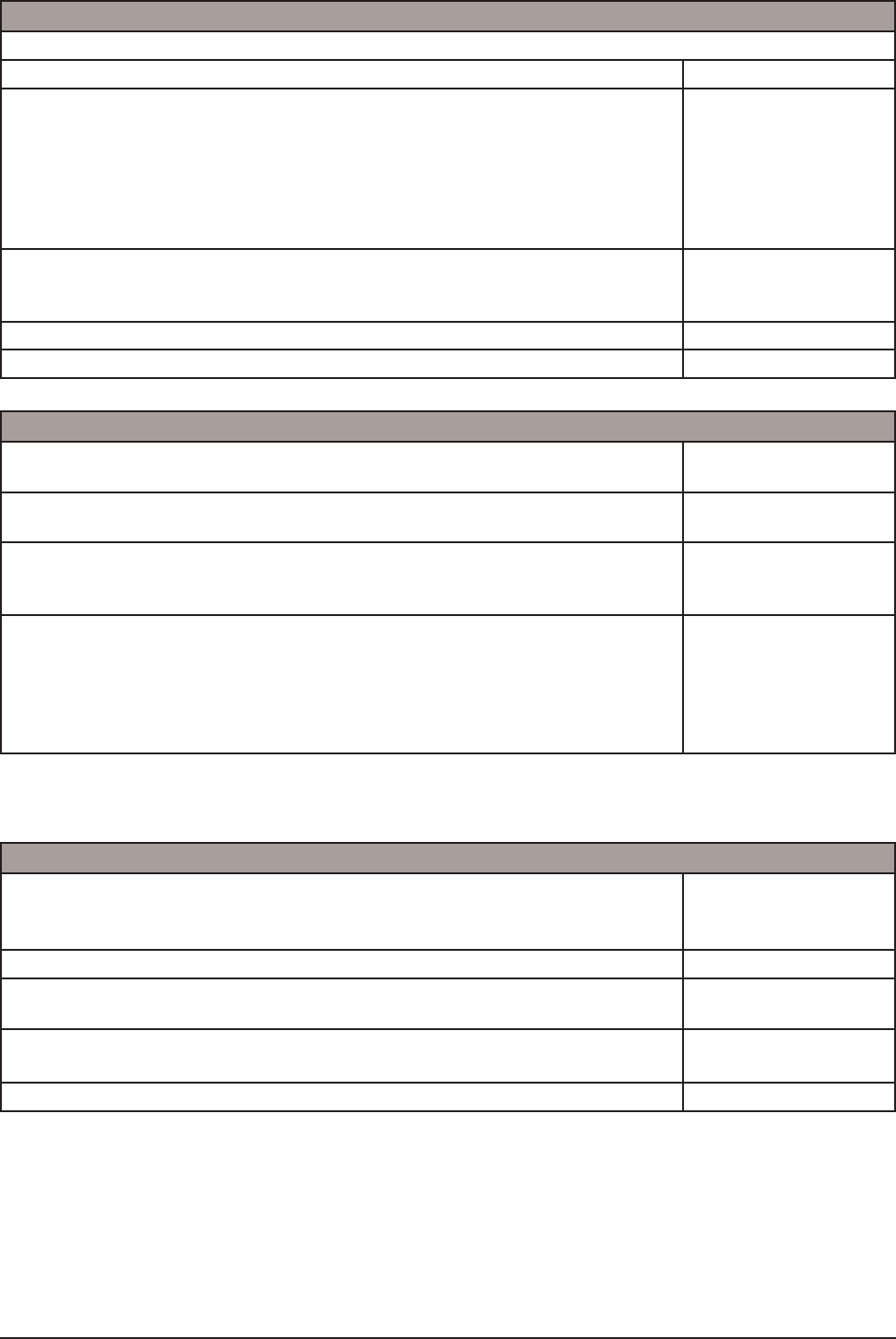
3.14 8065751025
Constellation® Vision System
Extrusion Setup Procedure
The extrusion handpiece connects to the suction/aspiration line from the cassette.
1. Present a sterilized extrusion handpiece to Scrub Nurse. Circulating Nurse
2. For Combined procedure cassettes: Connect the handpiece to the
aspiration line (light blue) of the irrigation/aspiration tubing set. The
irrigation line (light green) is not used. Use the white male/male luer to
adapt the extrusion handpiece to the blue connector of the aspiration line.
For Posterior procedure cassettes: Connect the handpiece to the auxiliary
aspiration tubing (light blue). Adaptor is not required.
Scrub Nurse
3. Place the handpiece in a sterile cup in preparation for priming. When
aspiration prime is selected, fill the sterile cup with sterile water or BSS.
Ensure the suction port is submerged in the fluid.
Circulating Nurse
4. Press Start Prime to complete the set up process. Scrub Nurse
Fiber Optic Illuminator Setup Procedure
1. Remove the fiber optic illuminator probe/fiber from the pak, carefully
uncoil the fiber, and present the metal connector to Circulating Nurse.
Scrub Nurse
2. Accept the metal connector from Scrub Nurse and plug it into the desired
illuminator connector. Verify it is fully seated in the adaptor.
Circulating Nurse
3. Slide the protective sheath from the tip of the illuminator probe. Press the
appropriate global Illuminator key to turn the illuminator ON. Adjust the
intensity as needed. Turn illuminator OFF when not in use.
Scrub Nurse
Optional fiber optic illuminator probes can be connected to the second
illuminator connector, supplementing the standard probe. Optional probes
include the following: bare-end, straight pick, pre-bent pick, wide angle,
shielded bullet, illuminated laser, and end irrigating. Some of these
probes deliver substantially less light output than the standard probe,
necessitating higher brightness levels.
Diathermy Setup Procedure
1. Scan the bar code on the Diathermy Kit with the Bar Code Scanner in
the back of the Constellation® console. Verify on the set up screen that
Diathermy is indicated on the screen and diathermy ports are illuminated.
Circulator or Non-sterile
Scrub Nurse
2. Present Diathermy Kit to Scrub Nurse. Circulating Nurse
3. Remove diathermy handpiece from packaging and present connectors to
Circulating Nurse.
Scrub Nurse
4. Accept connectors from Scrub Nurse and connect to the illuminated
Diathermy receptacles
Circulating Nurse
5. Adjust the Diathermy power level as required. Circulating Nurse
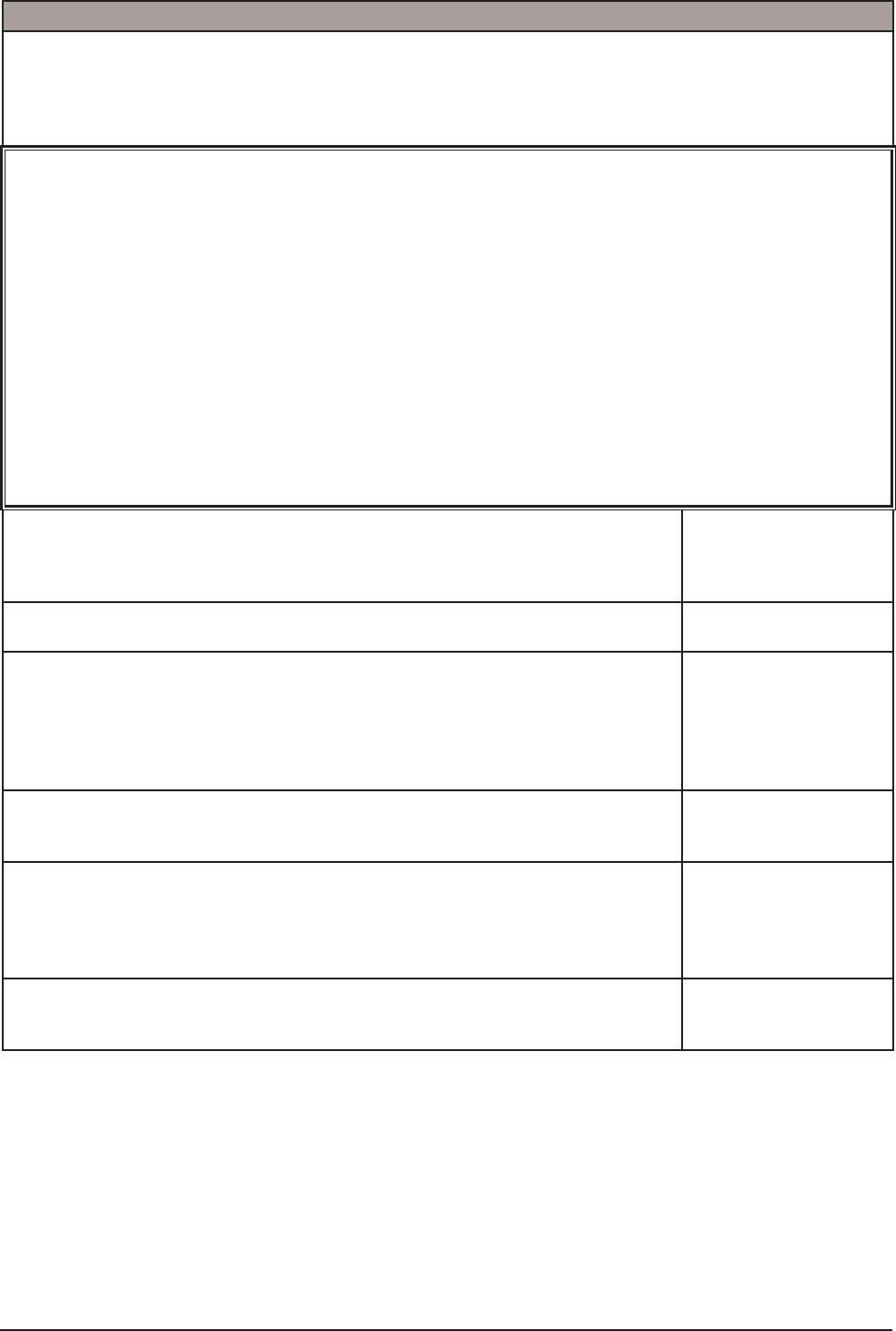
8065751025 3.15
Constellation® Vision System
Pneumatic Handpiece Setup Procedure
The Constellation® Pneumatic Scissors and Forceps Handpieces are designed to be used with the
Alcon Constellation® System and any reusable or disposable Grieshaber Microinstrument Tips with
Quick Lock Connector. It is provided sterile and is intended for single use. The handpiece can be
operated in Multicut (Scissors) or in Proportional mode. The mode of operation must be selected
according to the type of tip and the surgical application.
WARNINGS!
• For physician’s use only.
• Do not use the handpiece if the sterile package is damaged.
• Do not use after the expiration date.
• The handpiece is a sterile single use device and shall not be reused. Alcon Grieshaber assumes
no responsibility for complications that may arise as a result of the reuse or improper use of
the instrument.
• The handpiece shall be stored in a dark, dry and cool place. Do not expose to organic solvents,
ionizing radiation or ultra violet light.
• If any handpiece is received in defective condition, Alcon Grieshaber has to be notified. Do
not use damaged or defective handpieces.
• The instrument tip must be properly attached to the handpiece. Check that the dot on the tip
aligns with the mark on the counter-piece and that the tip fits tightly.
• After attaching the instrument tip to the handpiece, but prior to each use, the tip must be
thoroughly inspected for tight fit, correct function, wear and damage.
1. In the setup screen, select the instrument to be used, either Forceps,
Multicut Scissor, or Proportional Scissor and make settings adjustments
as desired. The connector on the Constellation® illuminates blue/purple
indicating where to connect the handpiece.
Scrub Nurse
2. Remove pneumatic handpiece from the sterile package and present
connector to Circulating Nurse.
Scrub Nurse
3. Accept the connector from Scrub Nurse and plug it into the illuminated
port on the console, depending on the type of instrument tip to be used.
Lock the connector by turning clockwise and ensure the connector is
firmly locked. The port illuminates green indicating the handpiece has
been attached to the correct port. If the port illuminates amber, the
handpiece has been connected to the wrong connector.
Circulating Nurse
3. Detach the instrument tip from the protection cap (reusable tips) or
remove the instrument tip from the blister pack of the sterile package
(disposable tips).
Scrub Nurse
4. Attach the instrument tip to the handpiece: Align the pin in the tip with the
groove in the connector part of the handpiece. Slide the tip longitudinally
onto the handpiece. Twist the tip clockwise until the dot of the tip aligns
with the marking on the handpiece. While doing this, two clicks will be
noticeable.
Scrub Nurse
5. Place scissors in the closed position by pressing the assigned footswitch
button. This action will keep the instrument in closed position while
passing through the cannula or the sclerotomy.

3.16 8065751025
Constellation® Vision System
LAST PAGE OF THIS SECTION
THIS PAGE INTENIONALLY BLANK
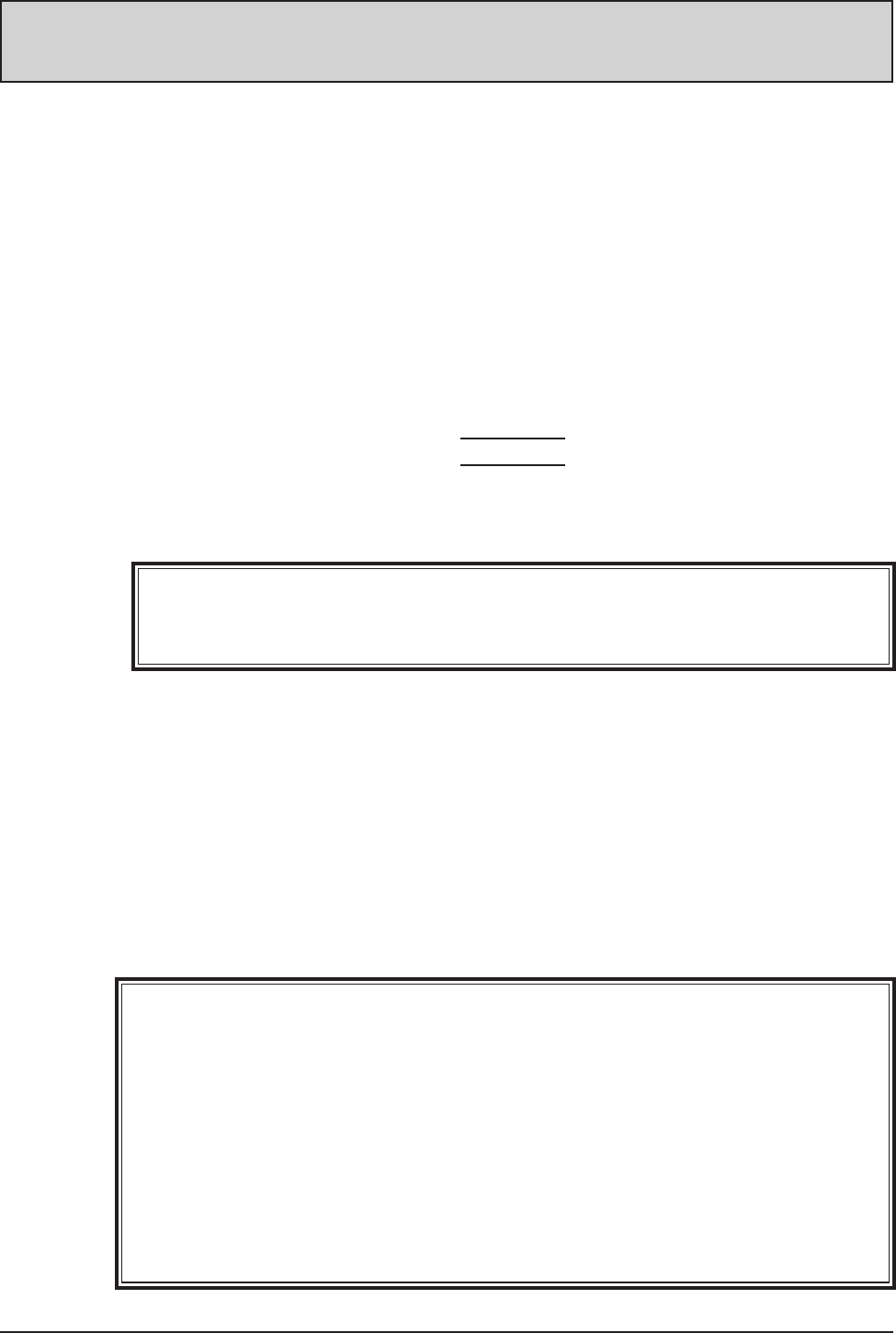
8065751025 4.1
Constellation® Vision System
SECTION FOUR
CARE AND MAINTENANCE
INTRODUCTION
This section of the manual is designed to inform the operator of basic care and
maintenance of the instrument. If a problem occurs on the instrument, call the Alcon
Technical Services Department and give details of the breakdown circumstances and
effects. From these elements, a specialized technician will evaluate the problem and
determine the maintenance requirements.
For optimum performance, it is the user’s responsibility to schedule preventive
maintenance service on the system and its accessories at least one time each year.
Alcon’s Field Service Engineers are trained and equipped to provide the highest
quality of workmanship.
CAUTION
There are no operator replaceable parts other than the fuse. Contact Alcon
Technical Services for all servicing issues.
WARNING!
The Constellation® Vision System battery can only be serviced by a factory-trained
Alcon service personnel. Access by untrained personnel can lead to injury.
CARE AND CLEANING
The following tips are recommended for proper care of the Constellation® Vision
System:
• Follow cleaning and maintenance schedules outlined in this section of the manual.
• Periodically check chassis appearance.
• Pay attention to correct operation of controls, connectors, and indicators.
• Damaged hardware must be replaced to ensure safe operation. Call Alcon
Technical Services for assistance.
WARNING!
A qualified technician must perform a visual inspection of the following components
every twelve months:
• Warning Labels (see section one of this manual)
• Power Cord
• Fuses
In case of a deficiency, do not use the system; call Alcon Technical Services.
A qualified technician must check ground continuity for leakage current every
twelve months to ensure they are within the applicable standards (for example:
EN60601-1/IEC601-1). Values must be recorded, and if they are above the applicable
standards, do not use the system; call Alcon Technical Services.

4.2 8065751025
Constellation® Vision System
UPON COMPLETION OF THE PROCEDURE
STEP ONE: Clean handpieces, probes, cables, forceps, etc., as instructed in DFU's
supplied with each accessory.
STEP TWO: Remove irrigation bottle from hanger and set aside. Remove spike from
irrigation bottle and discard tubing.
STEP THREE: Eject cassette and discard.
STEP FOUR: Flip the irrigation bottle holder to its storage position.
STEP FIVE: Press Standby power switch located at top of rear panel to remove
operating power from the system.
STEP SIX: Turn the Main power switch OFF. It is located in the middle of the rear
panel above the power cord.
STEP SEVEN: Remove air hose. Turn off C3F8 and SF6 valves.
STEP SEVEN: Disconnect the power cable from the wall receptacle and wind the
cable around the cord wrap.
STEP EIGHT: Place the footswitch and cable in storage compartment in front of base.
STEP NINE: If required, the front panel, the console, the footswitch, and the remote
control may be wiped with non-corrosive germicidal solution, alcohol, or mild soap
and water.
CAUTIONS
• Do not clean console or accessories using solvents or abrasives.
• Avoid spilling BSS® solution, or moisture of any kind, around the electrical
handpiece connectors.

8065751025 4.3
Constellation® Vision System
STERILIZATION INSTRUCTIONS
Please consult the accompanying Directions For Use (DFU) for cleaning and sterilization
instructions for Alcon approved reusable accessories. The DFU will provide the recommended
time and temperature guidelines for steam autoclave cycles performed by Alcon, Inc. The sterility
assurance level achieved with these parameters must be validated by each surgical facility.
Please refer to Association for the Advancement of Medical Instrumentation (AAMI) Standards or
your facility’s standard procedures for the most current specifications.
Additionally, per the Sterilizer Equipment Manual, the sterilizer reservoir is to be filled with distilled
or deionized water.
NOTE: The reusable items will withstand steam autoclave cycles at 134° C (273°F). Due to
the variations found in steam autoclaves and the variable bioburden on devices
in clinical use, it is not possible for Alcon to provide specific parameters to ensure
an adequate sterility assurance level. Validation of the individual autoclave, and
verification of the sterility assurance level achieved with a given steam sterilization
cycle, must be performed by each surgical facility. Please refer to below AAMI
Standards or your facility’s standard procedures for the most current specifications.
Please refer to appropriate accessory DFU for proper cleaning instructions.
AAMI TIR No. 12-1994, Designing, Testing, and Labeling Reusable Medical Devices
for Reprocessing in Health Care Facilities: A Guide for Device Manufacturers.
ANSI/AAMI Standards and Recommended Practices Volume 1.1: Sterilization
• Designation ST37-1996 (Good Hospital Practice: Flash sterilization – steam
sterilization of patient care items for immediate use)
• Designation ST46-1993 (Good Hospital Practice: Steam sterilization and sterility
assurance)

4.4 8065751025
Constellation® Vision System
Reusable Handpiece and Accessories Cleaning and Sterilization Instruction
The following cleaning instructions provide a method for effectively cleaning the
reusable U/S and handpieces and accessories. Due to the potential for Toxic Anterior
Segment Syndrome (TASS), Alcon does not recommend the use of enzymatic
cleaners and detergents. If however, local jurisdictions mandate their use relative to
ophthalmic instruments, the materials of construction are compatible, up to a pH of
11.3, when the enzymatic chemicals and detergents are completely rinsed/neutralized
immediately after cleaning/processing.
1 Thoroughly clean the handpiece before initial use and IMMEDIATELY
after each subsequent use. Do not allow the handpiece to dry after use until
thoroughly cleaned. Both a manual cleaning process and a cleaning process
using an automated washer are presented.
2 Manual Cleaning Procedure
Perform the following steps to manually clean the handpieces and accessories.
If an automated washer will be used for clean, go to step 3.
2.1 Remove any attached tubing sets and any disposable items such as tips and
sleeves from the handpiece. Discard according to surgical facility guidelines.
NOTE: For reusable I/A tips, do not remove until after the flushing in steps
5 and 6.
2.2 For handpieces with electrical connectors, disconnect the connector from the
console and install the protective cap prior to cleaning.
2.3 Wipe any residue from the handpiece with a soft, non-abrasive cloth and rinse
the handpiece with distilled or sterile water to remove any remaining debris. If
necessary, wash the exterior of the handpiece using a soft bristled brush.
2.4 Submerge the handpiece and tips in a container of sterile or distilled water. For
handpieces with electrical components, only submerge the nose cone (front part)
of the handpiece.
2.5 Using a syringe, draw or push a minimum of 120 ml of sterile, dionized/distilled
water through all aspiration and irrigation path ways (where applicable).
2.6 Using a syringe, flush all ports with 60 ml of air.
2.7 Dry the exterior surfaces of the handpiece body, tips and accessories with soft,
non-abrasive cloth.
2.8 Place the cleaned handpiece and cable in the sterilization tray to prevent damage
to connector and handpiece during storage and autoclaving.

8065751025 4.5
Constellation® Vision System
3 Automated Washer Cleaning Procedure
In the event use of an automated process is required, perform all of the
following steps to process the handpiece.
NOTES:
a) Due to the potential for the accumulation of particulate and bioburden
residues in the washer water reservoirs, it is the surgical facility’s responsibility
to properly maintain the equipment and their associated filters to ensure the
introduction of contaminant-free solutions into the handpieces.
b) This automated washing procedure provides a method per ISO 176641 for
effectively processing up to three (3) handpieces at a time.
c) The temperatures and cycle parameters below will not cause damage to the
product.
d) Do not wash the handpieces with non-ophthalmic instruments.
3.1 Manually clean the handpiece immediately after each surgical procedure per the
manual cleaning procedure above before using an automated washer.
3.2 Prepare the washer with multi-purpose injector per the washer operator’s
manual. The circulation rate of the automated washer should be at least 106
gallons (401 liters) of water per minute. The use of a typical automated washer
and wire basket is depicted below. Note: Use de-ionized water only.
Required materials:
• Detergent with pH range of 8.5 up to 9.5
• Organic acid neutralizer with pH range of 2.6 to 3.0.
• Adaptors and silicone tubing, e.g. Customized Auto Wash Kit: Alcon REF
8065750456.
3.3 Set detergent and neutralizer dispensers as recommended by detergent and
washer manufacturer.
3.4 Program washer to have the following automated cycle:
• Main wash at 55° C for 10 minutes (dispense detergent as recommended by
detergent and washer manufacturer)
• Neutralize for a minimum of 1.5 minutes (dispense neutralizer as
recommended by detergent and washer manufacturer)
• Rinse for 5 minutes at 22 - 27° C then drain
• Repeat rinse for 5 minutes at 22 - 27° C then drain
• Final Rinse at 70° C for 1.5 minutes then drain
• Dry at 100° C for 5 minutes
NOTE: Additional rinsing steps will not alter the effectiveness of the
validated cycle.
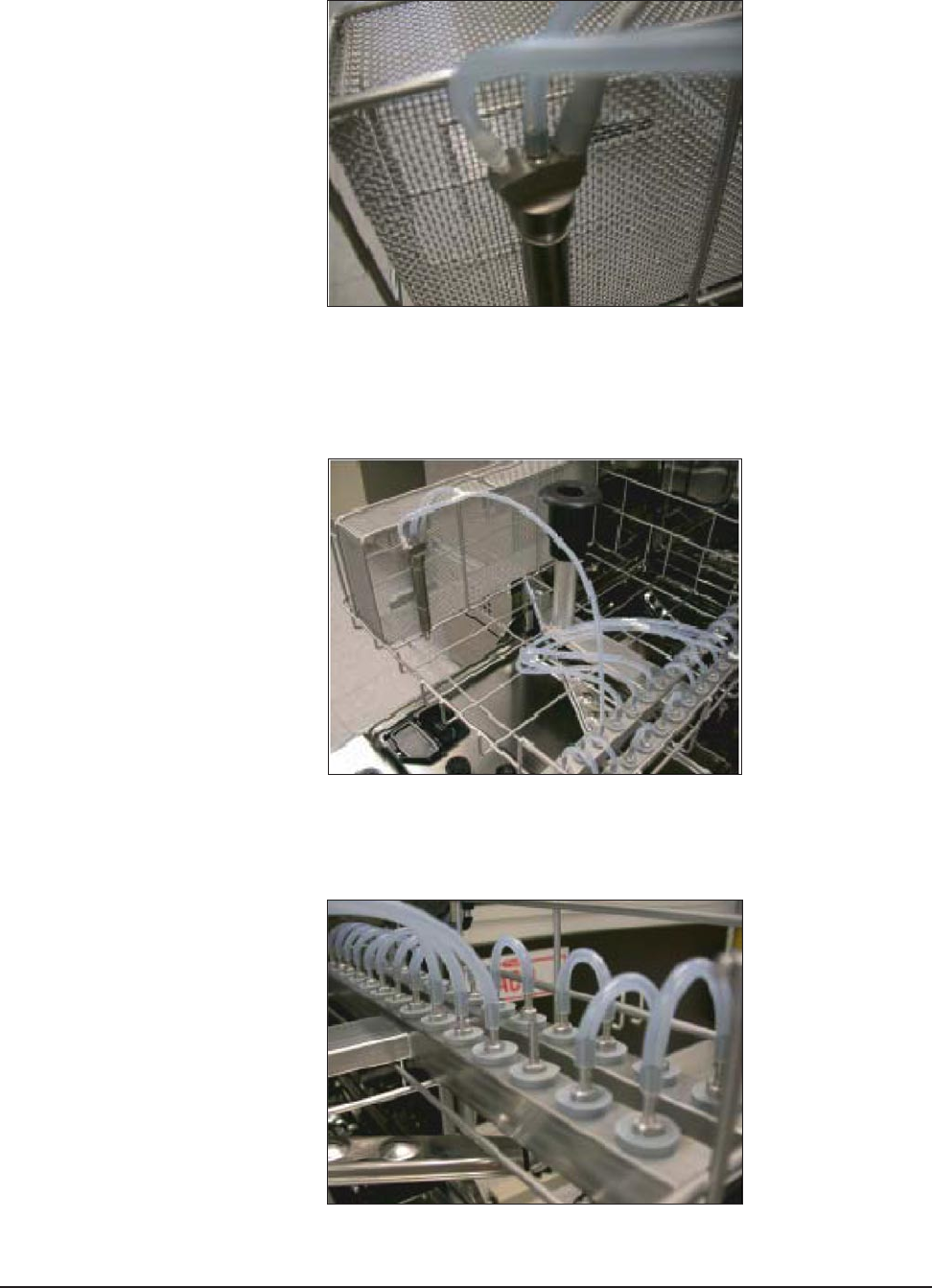
4.6 8065751025
Constellation® Vision System
3.5 Using the Auto Wash Kit, secure the handpiece to the wire mesh basket using
the small gauge wire and connect the handpiece with the “Y” adapter assembly
as shown.
Figure 4-1. Auto Wash: Handpiece with "Y" Adapter Connected
3.6 Place wire basket with handpiece in multi-purpose injector rack and connect the
“Y” adapter assembly to the 4 mm diameter injector nozzle as shown.
Figure 4-2. Auto Wash: "Y" Adapter Connected to Injector Nozzel
3.7 Plug off any unused injector nozzles with silicone tubing.
Figure 4-3. Auto Wash: Unused Injectors Shown Plugged Off
Pictured: Miele* Labwasher, Model G7735 with injector Model #0-177
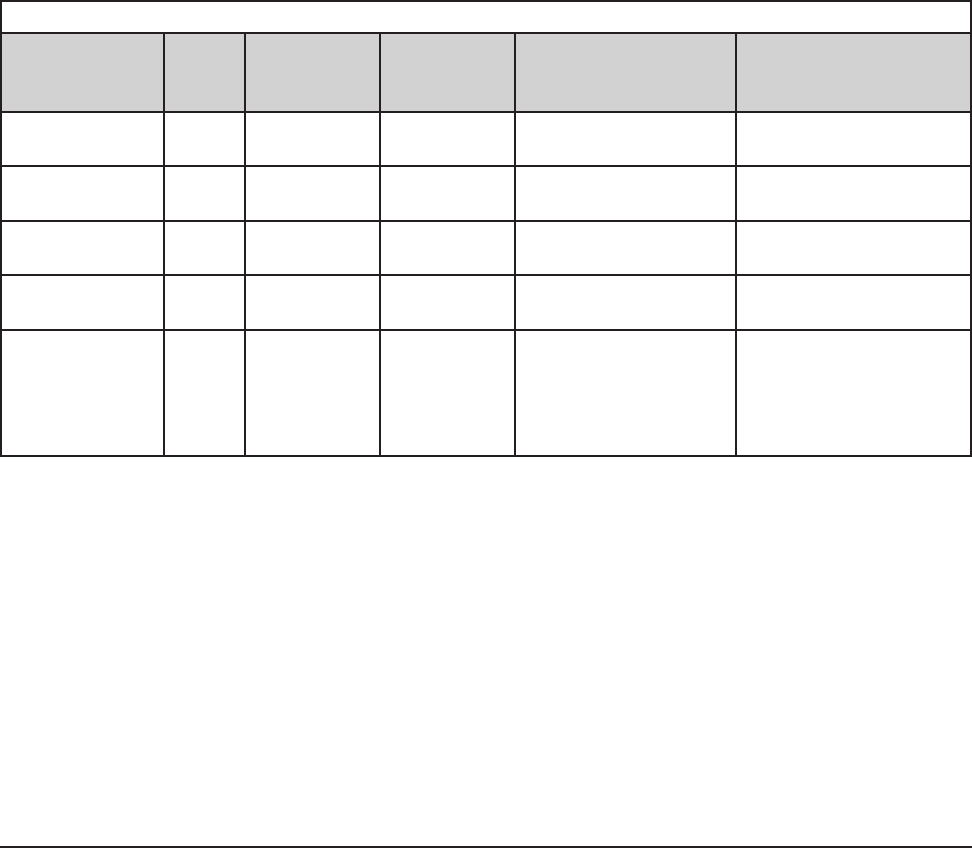
8065751025 4.7
Constellation® Vision System
3.8 Start the wash program. When the wash program is completed, replace the
processed handpiece and cable in the sterilization tray to prevent damage to
connector and handpiece during storage and autoclaving.
4 Sterilize the handpiece using a steam sterilization cycle.
The sterilization temperatures and settings provided in Table 1 below have been
validated by Alcon Laboratories, Inc. as being capable of sterilizing the reusable
U/S and Frag handpieces and non-electrical accessories for re-use. It remains
the responsibility of the processor to ensure that the processing as actually
performed using equipment, materials and personnel in the facility achieve the
desired result. This requires verification and routine monitoring of the process.
Likewise any deviation by the processor from the instructions provided should
be properly evaluated for effectiveness and potential adverse consequences.
Please refer to nationally recognized standards, such as AAMI Standards2,3,4 or
to your facility’s standard procedures.
NOTE: Due to the potential for the accumulation of particulate and
bioburden residues in the sterilizer water reservoirs, it is the surgical
facility’s responsibility to properly maintain the equipment and their
associated filters to ensure the introduction of contaminant-free steam into
the handpieces.
Table 4-1. Recommended Sterilization Temperatures and Time Settings
Sterilizer Type Pulses Sample
Configuration Temperature
Min. Exposure Time
for U/S and Frag
Handpiece (Minutes)
Min. Exposure Time
for non-electrical
accessories (Minutes)
Gravity
Displacement N/A Wrapped 132°C
(270°F) 18 15
Gravity
Displacement N/A Unwrapped 132°C
(270°F) 8 10
Pulsing
Prevacuum 4Unwrapped 132°C
(270°F) 4 4
Pulsing
Prevacuum 4Wrapped 134°C
(273°F) 5 5
Pulsing
Prevacuum
(four negative
and four positive
pulses)
4Wrapped 134-137°C
(273-279°F) 3 3
References:
1. ISO 17664: Sterilization of medical devices - Information to be provided by the
manufacturer for the processing of resterilizable medical devices
2. AAMI TIR12:2004, Designing, testing, and labeling reusable medical devices for
reprocessing in health care facilities: A guide for device manufacturers, 2ed.
3. AAMI TIR30:2003, A compendium of processes, materials, test methods, and
acceptance criteria for cleaning reusable medical devices, 1ed.
4. ANSI/AAMI ST79:2006, Comprehensive guide to steam sterilization and sterility
assurance in health care facilities.
* Registered trademark of Miele & Cie. KG

4.8 8065751025
Constellation® Vision System
Disposal of Xenon Lamps
WARNING!
The bulb of the xenon lamp is under constant high pressure. There is a risk it may
burst with explosive force if knocked or damaged. Protective measures:
- Keep the lamp in its protective sleeve at all times during installation
- If you are handling the lamp without its protective sleeve, always wear safety
goggles, a face mask, gauntlets with wrist protectors and a breast protector.
In the USA contact the Alcon Technical Services Department for lamp disposal at
800/832-7827. Outside the USA contact your local Alcon affiliate.
LAST PAGE OF THIS SECTION
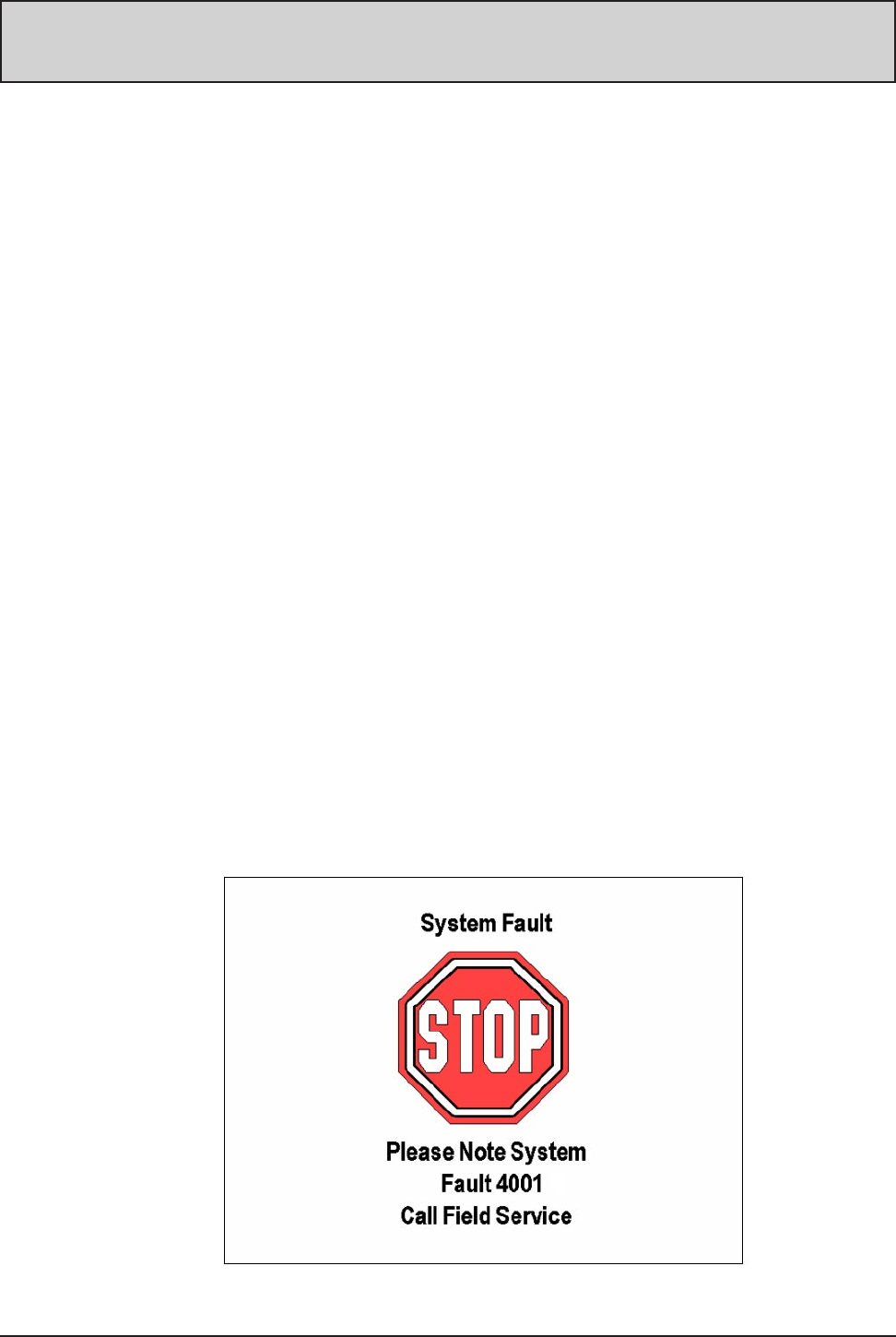
8065751025 5.1
Constellation® Vision System
SECTION FIVE
TROUBLESHOOTING
Table 5-1 is a general troubleshooting guide that addresses symptoms/observations
and what the operator can do to try and solve the observed problem. Figure 5-5 and
Table 5-2 are presented as aids to rapid location of failed or malfunctioning parts
or components in the Constellation® Vision System; they are not meant to replace
standard troubleshooting methods. In all cases, should the corrective actions not
provide the desired result, call your Alcon Technical Services Department.
Equipment Malfunction
The system communicates equipment information and malfunctions through the
display of Information Messages, Advisories, System Errors, and System Faults
based on the level of severity.
The presentation of errors is priority based, with System Faults being the highest
followed by System Errors, Advisory Messages, and Information Messages. Since
it is possible for the system to generate multiple simultaneous error conditions, the
errors are queued according to their priority. In the event of multiple error conditions
within the same category, the most recent error is displayed.
System Fault Messages
System Faults are displayed full screen as shown in Figure 5-1. System Faults require
complete system shutdown and the system performs the following actions when a
fault is detected:
Place Sub-Systems into a safe state.
Display fault message screen.
Activate an error tone.
Ignore any input from all the keys and the footswitch.
The user must cycle power to reset the system.
•
•
•
•
•
Figure 5-1 System Fault Display Screen
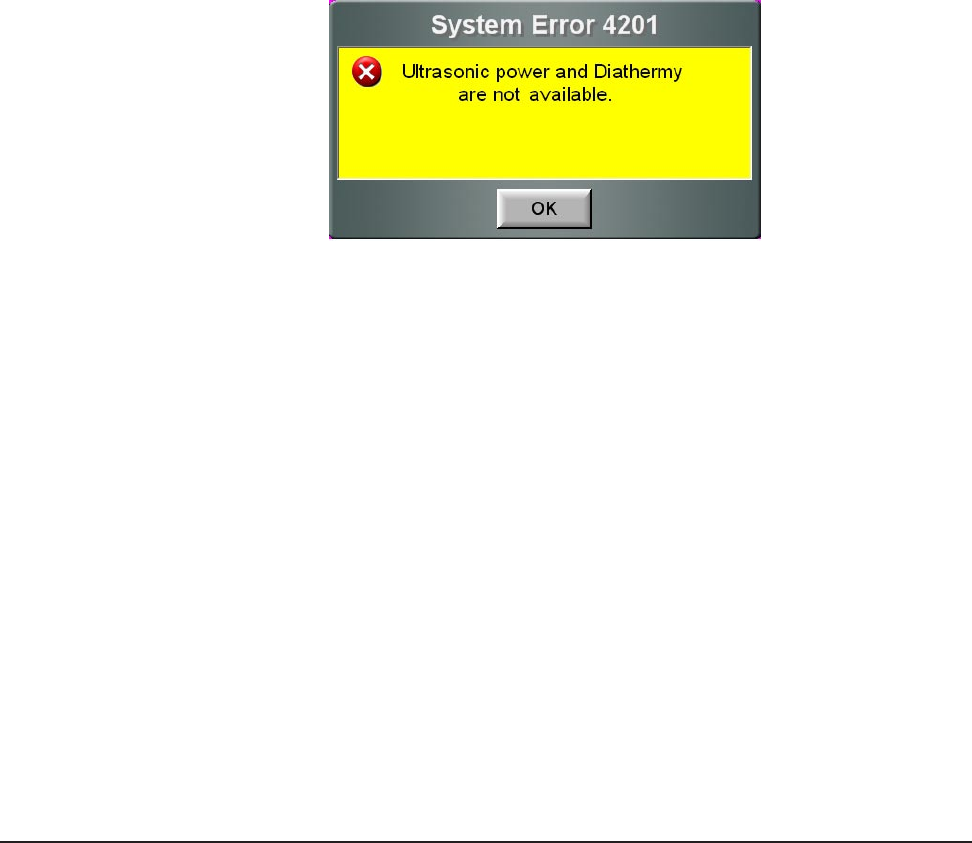
5.2 8065751025
Constellation® Vision System
System Error Messages
System Error Messages are displayed in a dialog box as shown in Figure 5-2 System
Errors require a partial system shutdown. When an error is detected, the following
actions occur.
Surgical modes related to the error are disabled.
A System Error dialog box is displayed. If the error does not affect the current
active modes, they will remain activated, but the System Error dialog will
still be displayed. The dialog will be removed when the user presses a key to
acknowledge the error.
Activate an error tone.
Keys of unavailable modes will be disabled\grayed. If an unavailable mode key is
pressed, an invalid key tone is emitted and the System Error dialog will again be
displayed.
(TBD) Once a System Error occurs, its status remains until the system power is
cycled. No attempt is made to recover; i.e. modules are not reset and then tested
again. The unavailable modes will not be made available. The exception to this
case is the LPA low-pressure error due to the case of the user triggering this error
during routine setup of the machine. This error can be cleared by correcting the
error condition or by operator acceptance of the condition.
•
•
•
•
•
Figure 5-2 System Error Dialog Box
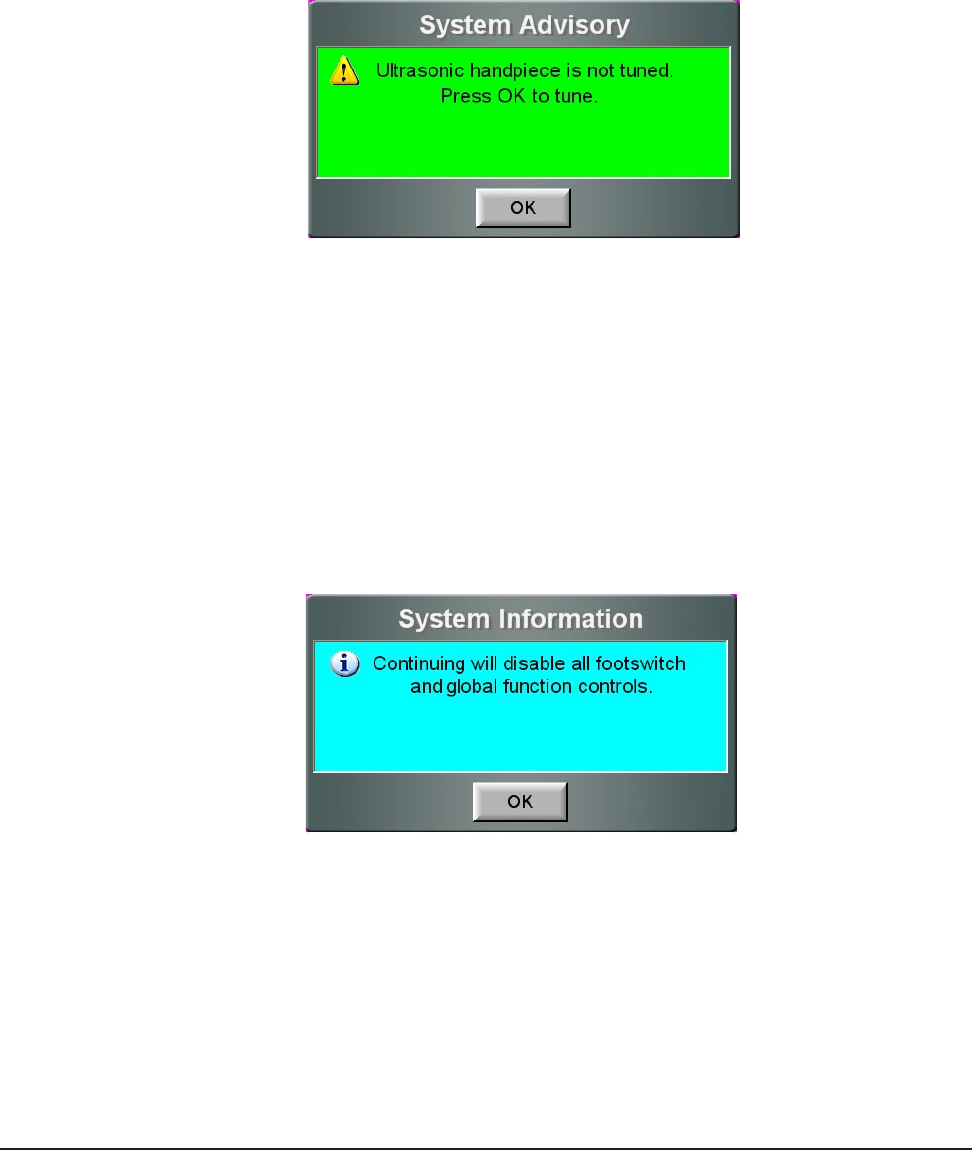
8065751025 5.3
Constellation® Vision System
Advisory Messages
Advisory Messages are displayed in a dialog box as shown in Figure 5-3. Advisory
Messages indicate a minor failure in the system, typically a situation that can be
corrected by the user. When an advisory is detected, the following actions occur:
Surgical modes relating to the advisory are not available.
An Advisory Message popup window is displayed. The dialog is removed if
the condition is corrected or if the operator presses a popup window key to
acknowledge the advisory.
Activate an advisory tone.
•
•
•
Figure 5-3 Advisory Dialog Box
Information Messages
Information Messages are displayed in a dialog box as shown in Figure 5-4.
Information Messages indicate are displayed to confirm a critical operator request or
to provide status. When a condition corresponding to a system message is displayed,
the following actions occur:
An Information Message dialog box is displayed. The dialog is removed when
the action is completed, or when the operator presses a dialog box key to
acknowledge the Information Message.
•
Figure 5-4 System Information Dialog Box
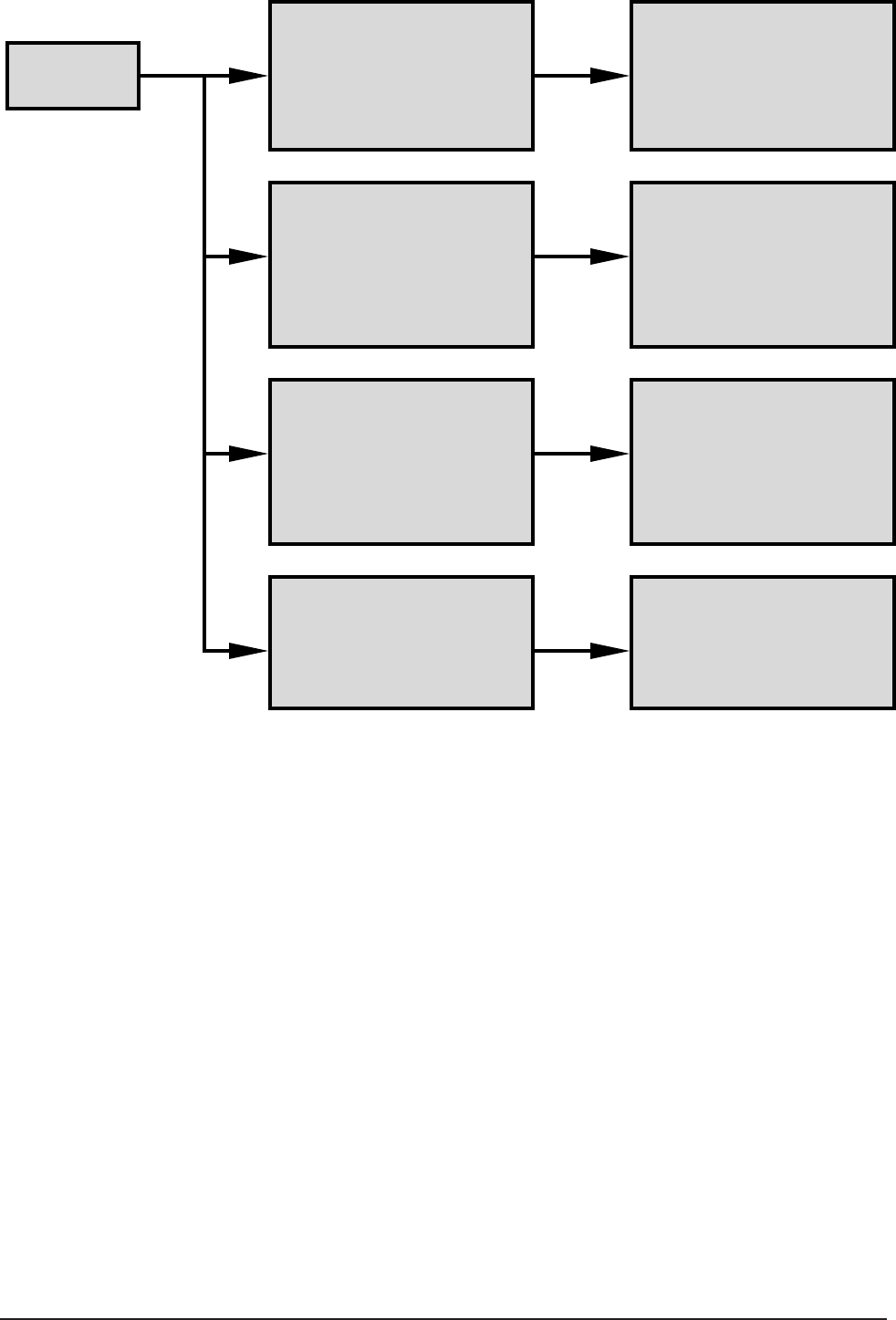
5.4 8065751025
Constellation® Vision System
LAST PAGE OF THIS SECTION
Figure 5-5
TROUBLESHOOTING GUIDE - When a problem is encountered, refer to this chart first.
No message is displayed, but
unable to setup and operate as
described in this operator's manual
and other applicable labeling.
Problem
Encountered
Follow the Problem Conditions table
in this section of the operator’s man-
ual. If unable to fix the problem, or
if the problem is not described in
the troubleshooting table, contact
Alcon Technical Support or your
local Alcon representative.
Unit displays an Advisory number
and message. These messages
are displayed within a dialog box
and have a green border.
Follow the Advisories troubleshoot-
ing table in this section of the oper-
ator’s manual. If unable to fix the
problem, write down the Advisory
number and message exactly as it
appears on the screen, then con-
tact Alcon Technical Support or
your local Alcon representative.
Write down the Warning number and
message exactly as it appears on the
screen, then contact Alcon Technical
Support or your local Alcon repre-
sentative. Some or all of the functions
could be disabled. Do not use unit
unless the case is already started
and no back-up is available.
Unit displays a System Fault
number and message. These
messages are displayed within a
dialog box and have a red border.
Write down the Fault number and
message exactly as it appears on the
screen, then contact Alcon Technical
Support or your local Alcon repre-
sentative. Discontinue use of unit
until the problem is resolved.
Unit displays a Warning number
and message. These messages
are displayed within a dialog box
and have a yellow border.
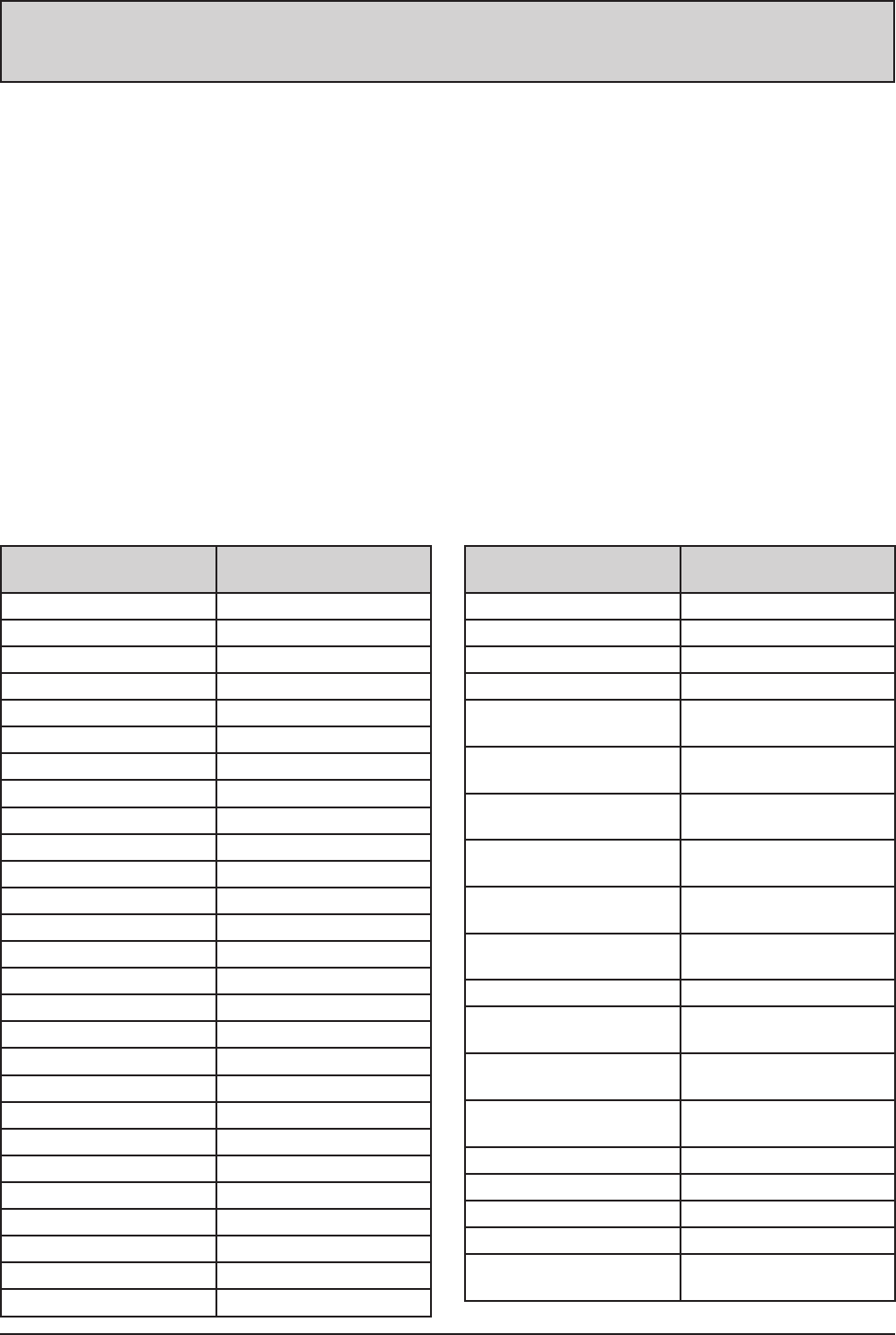
8065751025 6.1
Constellation® Vision System
SECTION SIX
ACCESSORIES AND PARTS
Description Current Part/Catalog
Number
Quick Lock Scissor Tip 712.01.00
Quick Lock Scissor Tip 712.21.00
Quick Lock Scissor Tip 712.22.00
Quick Lock Scissor Tip 712.24.00
Quick Lock Scissor Tip 712.25.00
Quick Lock Scissor Tip 712.26.00
Quick Lock Scissor Tip 712.51.00
Quick Lock Scissor Tip 712.52.00
Quick Lock Scissor Tip 712.53.00
Quick Lock Scissor Tip 712.71.00
Quick Lock Scissor Tip 712.77.00
Quick Lock Forceps Tip 712.03.00
Quick Lock Forceps Tip 712.09.00
Quick Lock Forceps Tip 712.10.00
Quick Lock Forceps Tip 712.12.00
Quick Lock Forceps Tip 712.13.00
Quick Lock Forceps Tip 712.16.00
Quick Lock Forceps Tip 712.20.00
Quick Lock Forceps Tip 712.41.00
Quick Lock Forceps Tip 712.42.00
Quick Lock Forceps Tip 712.43.00
Quick Lock Forceps Tip 712.44.00
Quick Lock Forceps Tip 712.45.00
Quick Lock Forceps Tip 712.46.00
Quick Lock Forceps Tip 712.48.00
Quick Lock Forceps Tip 712.80.00
Quick Lock Forceps Tip 712.81.00
In this section of the Constellation® Vision System Operator's Manual is a list of Alcon-approved
accessories and replacement items. Use of non-approved accessories cannot be permitted.
Please contact the Alcon Sales Department for in-service information prior to initial use of
handpieces, accessories, or paks.
For additional information, please contact the Alcon Sales Department.
Phone: Write:
(800) 862-5266 or Alcon, Inc.
(817) 293-0450 6201 South Freeway
Ask for Customer Service Fort Worth, TX. 76134-2099
INTERNATIONAL: Please contact your local Alcon Sales Office.
Description Current Part/Catalog
Number
Quick Lock Forceps Tip 712.91.00
Quick Lock Forceps Tip 712.94.00
Quick Lock Forceps Tip 712.95.00
Quick Lock Forceps Tip 712.96.00
20 Ga UltraVit Probe,
5000 CPM w/RFID
8065750948
23 Ga UltraVit Probe,
5000 CPM w/RFID
8065750949
25 Ga UltraVit Probe,
5000 CPM w/RFID
8065750950
20 Ga UltraVit Probe,
2500 CPM w/RFID
8065751017
23 Ga UltraVit Probe,
2500 CPM w/RFID
8065751018
25 Ga UltraVit Probe,
2500 CPM w/RFID
8065751019
20 Ga AVIT UltraVit 8065751020
Constellation® Pneumatic
Handle
NA
Constellation® Frag
Handpiece
8065750888
212-1602-501
Handpiece, Infiniti™*
Ultrasound
210-1125-501
8065750439
VFC Kit 8065750957
AGF 8065751014
20 ga Frag Kit 8065750956
Diathermy 8065807901
23 GA Wide angle with
RFID
8065751184
Table 6-1. Constellation® Vision System Accessories

6.2 8065751025
Constellation® Vision System
Description Current Part/Catalog
Number
25 GA Wide angle with
RFID
8065751185
Light probe, Bare End 8065750998
Light probe, Ryan Pik 8065751000
Light probe, End Irrig 8065751001
Light probe, Mem Pik 8065751002
Light probe, Shielded
Bullet w/Pik
8065751003
Laser, RFID, 20 GA, 102-C 8065750989
Laser, RFID, 20 GA, 102-S 8065750990
Laser, RFID, 23 GA, S 8065750991
Laser, RFID, 25 GA, S 8065750978
Laser, RFID, Chang 107-C 8065750979
Laser, RFID, Chang 107-S 8065750980
Laser, RFID, Chang 107ST 8065750981
Laser/III RFID 20 GA C 8065750985
Laser/III RFID 20 GA S 8065750986
30° Round, 0.9 mm ABS®
Tip
8065741085
45° Round, 0.9 mm ABS®
Tip
8065741086
30° Kelman®, 0.9 mm
ABS® Tip
8065741087
45° Kelman®, 0.9 mm
ABS® Tip
8065741088
30° Round, 1.1 mm ABS®
Tip
8065741089
45° Round, 1.1 mm ABS®
Tip
8065741090
30° Kelman®, 1.1 mm
ABS® Tip
8065741091
45° Kelman®, 1.1 mm
ABS® Tip
8065741092
30° Round, 0.9 mm Flared
ABS® Tip
8065741093
45° Round, 0.9 mm Flared
ABS® Tip
8065741094
30° Kelman®, 0.9 mm
Flared ABS® Tip
8065741095
45° Kelman®, 0.9 mm
Flared ABS® Tip
8065741096
30° Round, 1.1 mm Flared
ABS® Tip
8065741097
45° Round, 1.1 mm Flared
ABS® Tip
8065741098
30° Kelman®, 1.1 mm
Flared ABS® Tip
8065741099
45° Kelman®, 1.1 mm
Flared ABS® Tip
8065741100
Description Current Part/Catalog
Number
30° Round, 0.9 mm
Tapered ABS® Tip
8065750278
45° Round, 0.9 mm
Tapered ABS® Tip
8065750279
30° Kelman®, 0.9 mm
Tapered ABS® Tip
8065750280
45° Kelman®, 0.9 mm
Tapered ABS® Tip
8065750281
30° Round, 0.9 mm Tip 8065750282
45° Round, 0.9 mm Tip 8065750283
30° Kelman®, 0.9 mm Tip 8065750284
45° Kelman®, 0.9 mm Tip 8065750285
30° Round, 1.1 mm Tip 8065750286
45° Round, 1.1 mm Tip 8065750287
30° Kelman®, 1.1 mm Tip 8065750288
45° Kelman®, 1.1 mm Tip 8065750289
0.9 mm MicroSmooth®
High Infusion Sleeve
8065740842
1.1 mm MicroSmooth®
High Infusion Sleeve
8065740872
0.9 mm MicroSmooth® 8065750159
1.1 mm MicroSmooth® 8065750160
0.9 mm MicroSmooth®
Ultra Infusion Sleeve
8065750517
1.1 mm MicroSmooth®
Ultra Infusion Sleeve
1.1 mm MicroSmooth®
Micro Infusion Sleeve
30° Round, 0.9 mm
Tapered MicroPhaco Tip
45° Round, 0.9 mm
Tapered MicroPhaco Tip
30° Kelman®, 0.9 mm
Tapered MicroPhaco Tip
8065750439
45° Kelman®, 0.9 mm
Tapered MicroPhaco Tip
30° Round, 0.9 mm
MicroPhaco Tip
45° Round, 0.9 mm
MicroPhaco Tip
30° Kelman®, 0.9 mm
MicroPhaco Tip
45° Kelman®, 0.9 mm
MicroPhaco Tip
I/A Tip 0.5 mm 355-1009
I/A Tip 0.3 mm Small Bore 356-1007
I/A Tip 0.3 mm Small Bore
Mod
356-1009
I/A Tip 0.3 mm Bent 356-1010
Table 6-1. Constellation® Vision System Accessories
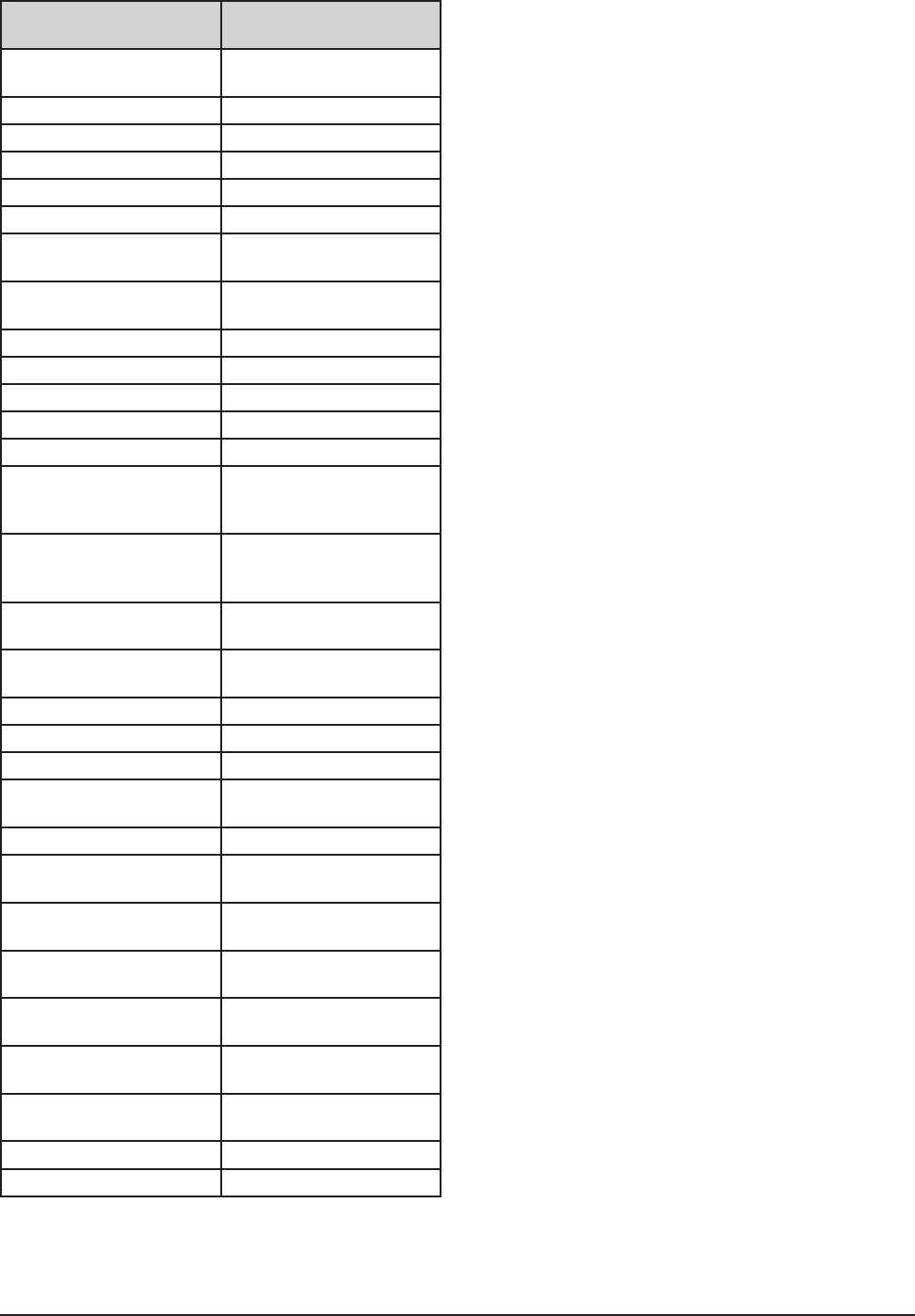
8065751025 6.3
Constellation® Vision System
Description Current Part/Catalog
Number
I/A Tip 0.3 mm Bent &
Sand Blast
356-1020
Silicone I/A Tip, Straight
Silicone I/A Tip, Bent
Straight Tip, .3 mm 8065750439
45° Bent Tip, .3 mm 8065750439
90° Bent Tip, .3 mm
Ultraflow™* IA Handpiece
Comp
Ultraflow™* IA Handpiece
Only
Ultraflow™* IA Tip STR
Ultraflow™* IA Tip CRVD
Ultraflow™* IA 45°
Ultraflow™* IA 90°
Ultraflow™* IA 1200
Coaxial Anterior Vitrectomy
Irrigation Sleeve -
Reusable
Coaxial Anterior Vitrectomy
Irrigation Sleeve - Single
Use
Bipolar Cable, 12 ft.
Silicone, IEC-601
Bipolar Cable, 12 ft. Disp.
Ster IEC-601
Brush, 18 Gage, Straight
Brush, 20 Gage, Straight
Brush, 18 Gage, Curved
Brush, 18 Gage,
Widestroke
Brush, 23 Gage, Tapered
Vertical Scissors DSP
0.7mm
Vertical Scissors DSP
0.9mm
Vertical Scissors DSP
1.0mm
Vertical Scissors DSP
1.5mm
Proportional Handpiece
Standalone
Snap Action Handpiece
Standalone
Table 6-1. Constellation® Vision System Accessories

6.4 8065751025
Constellation® Vision System
LAST PAGE OF THIS SECTION
THIS PAGE INTENTIONALLY BLANK